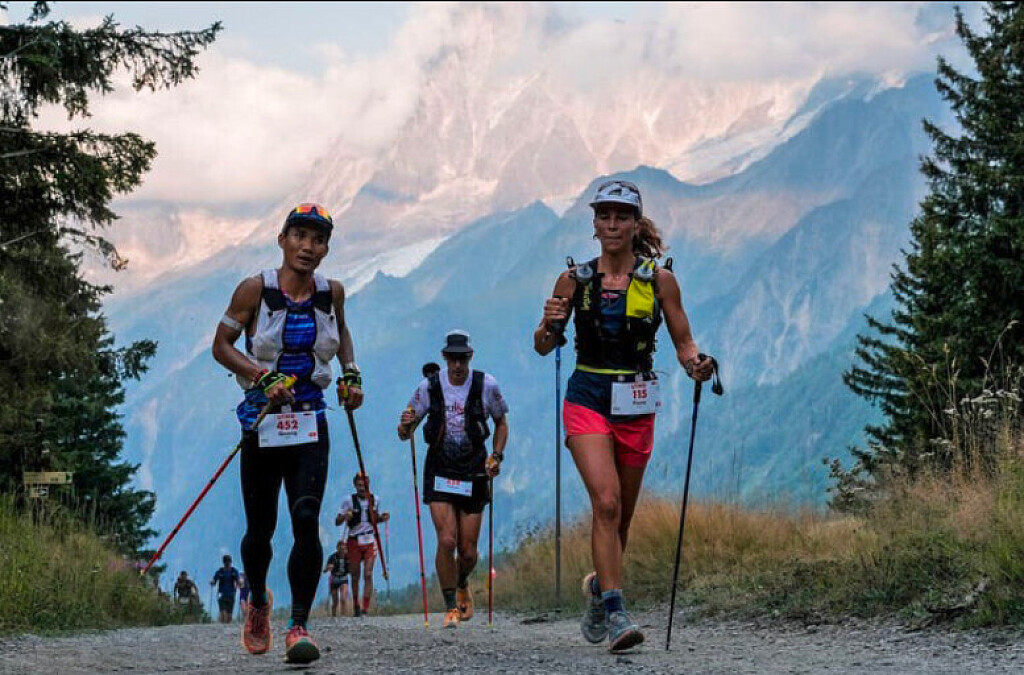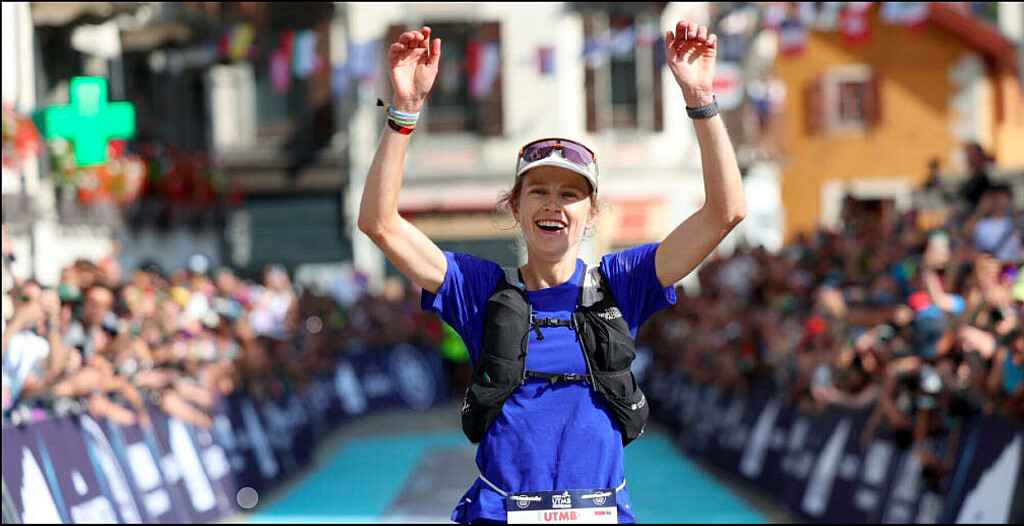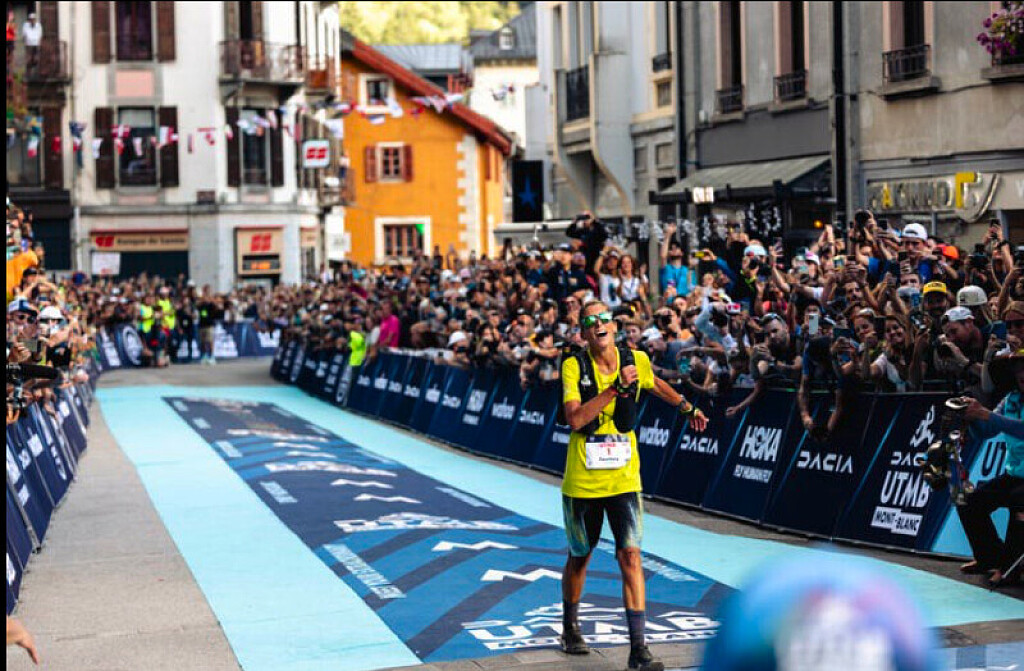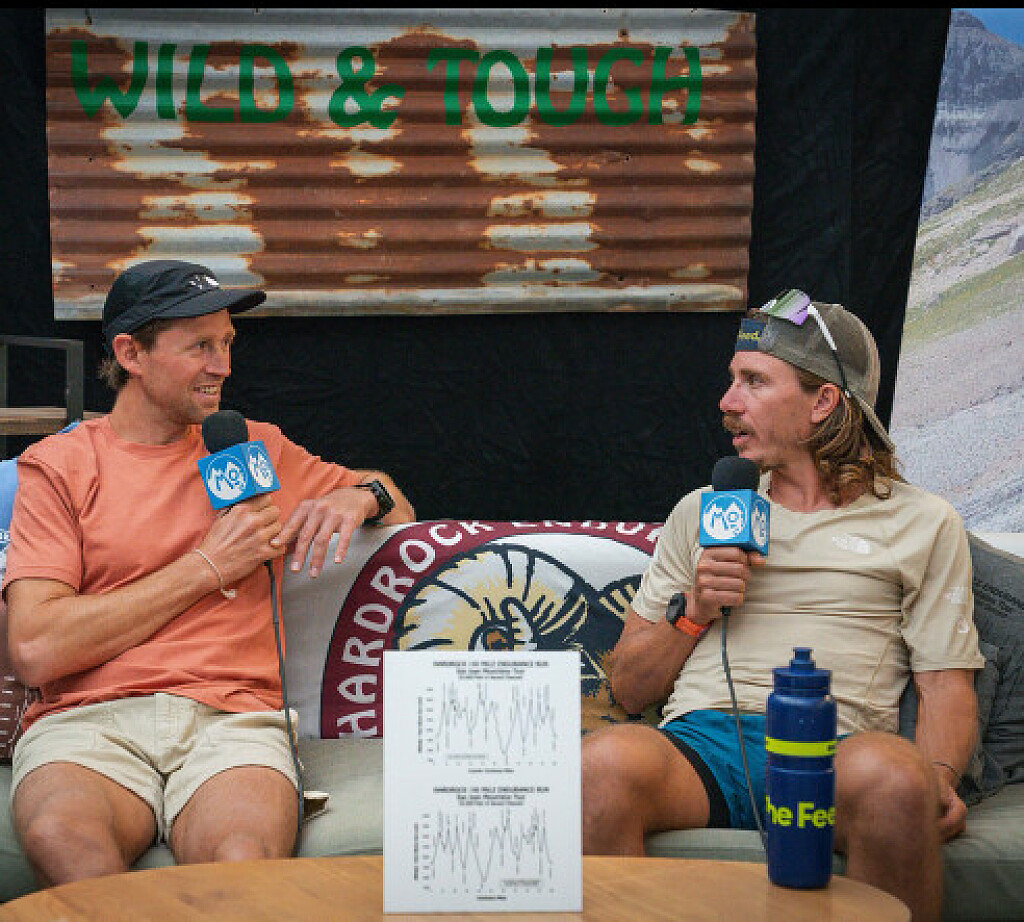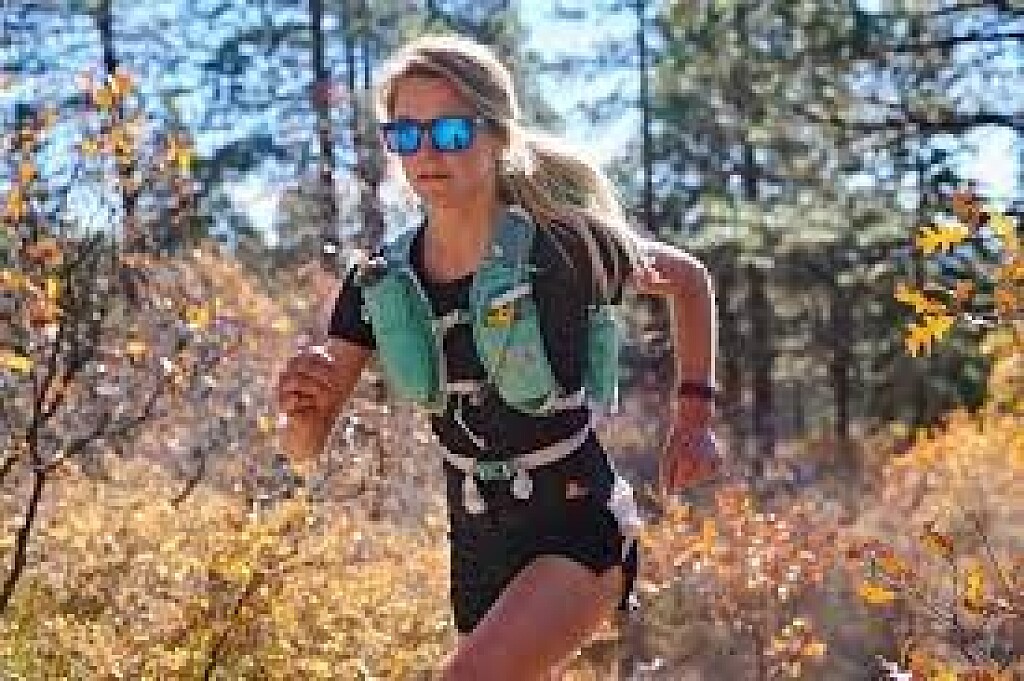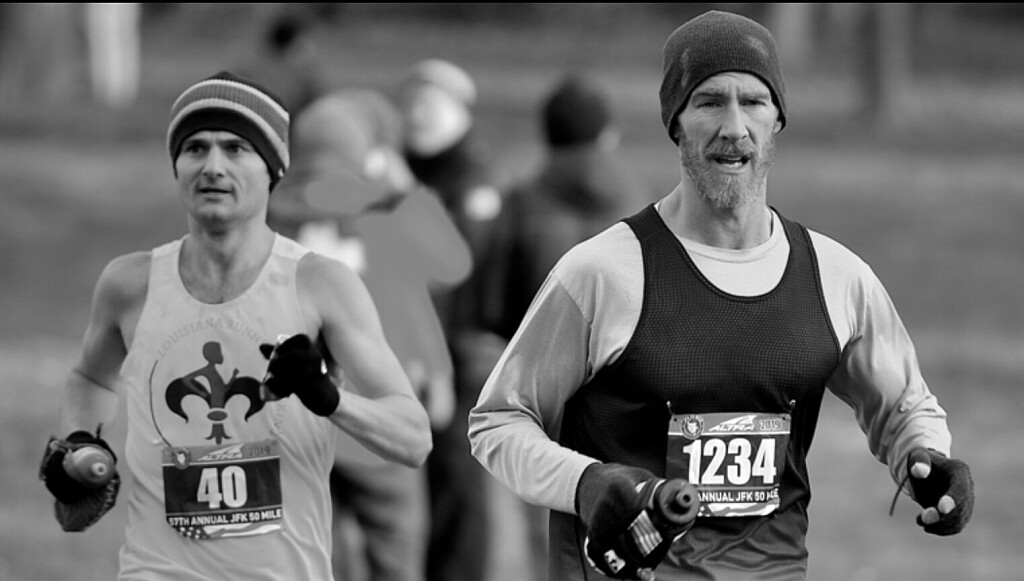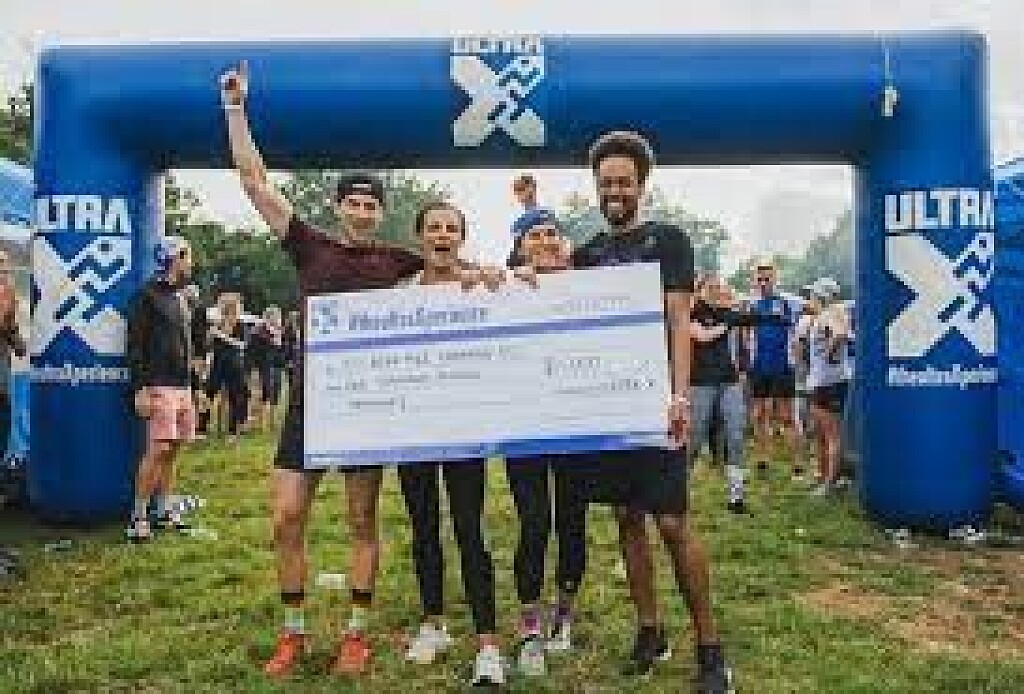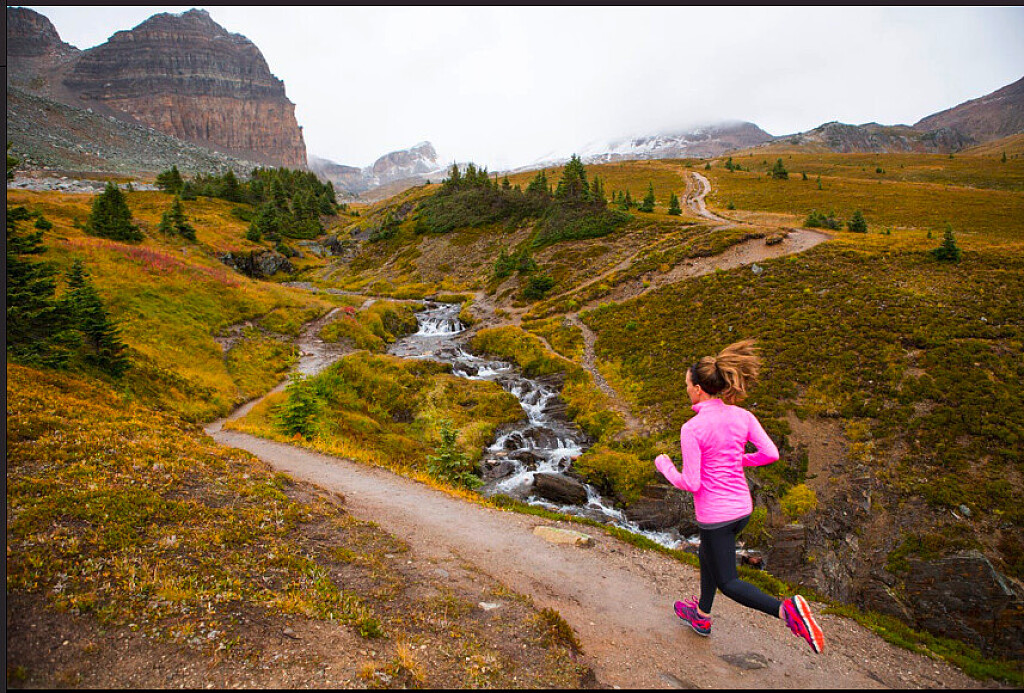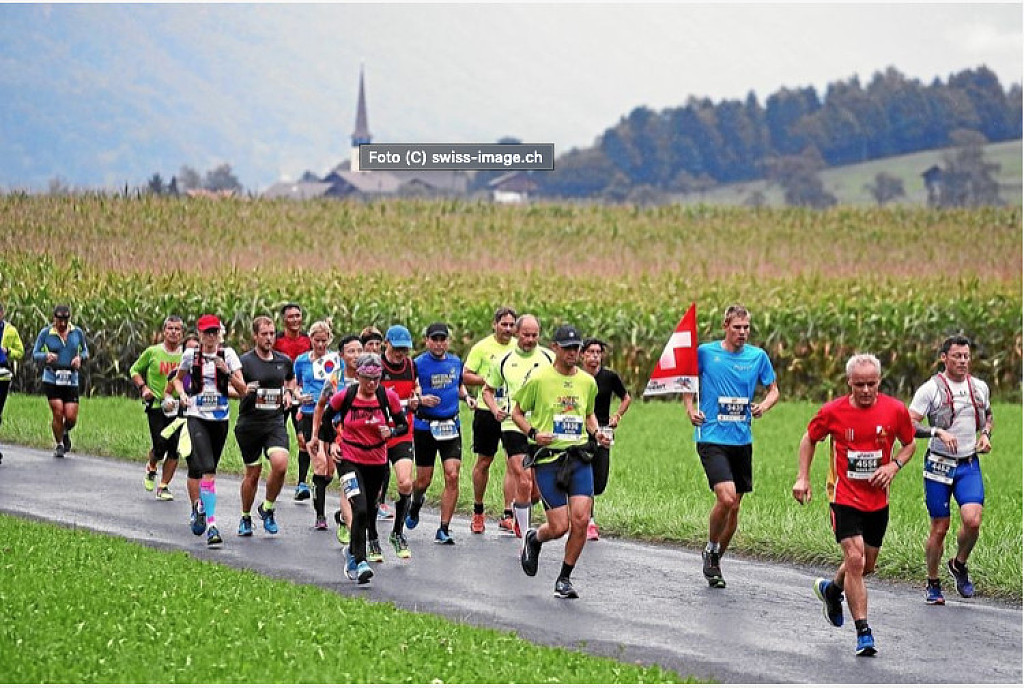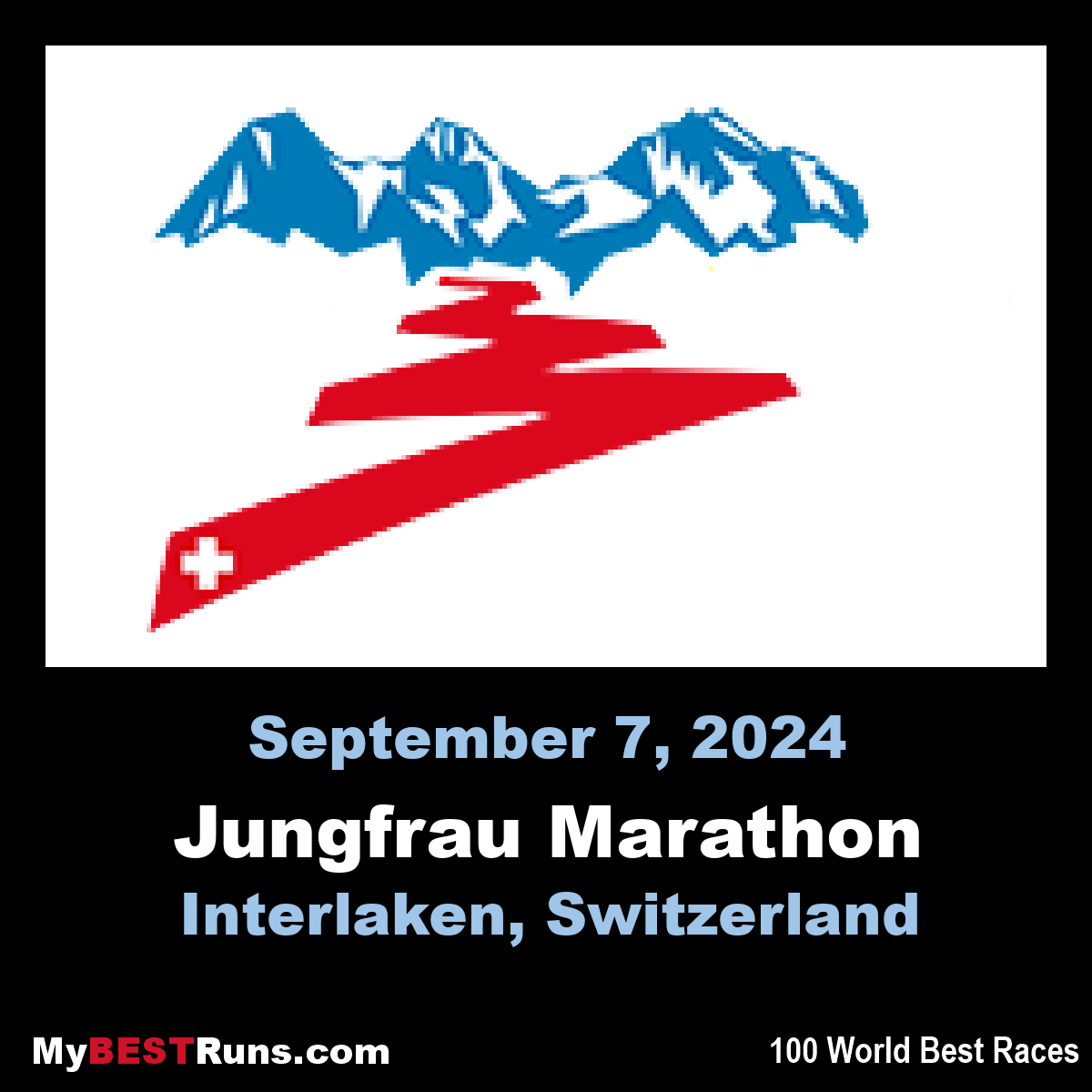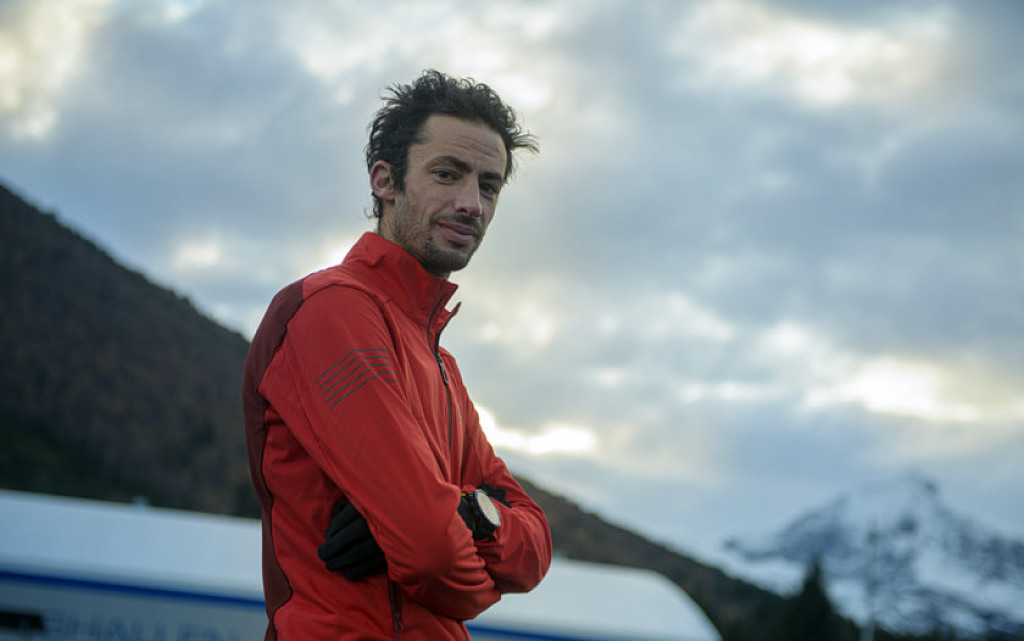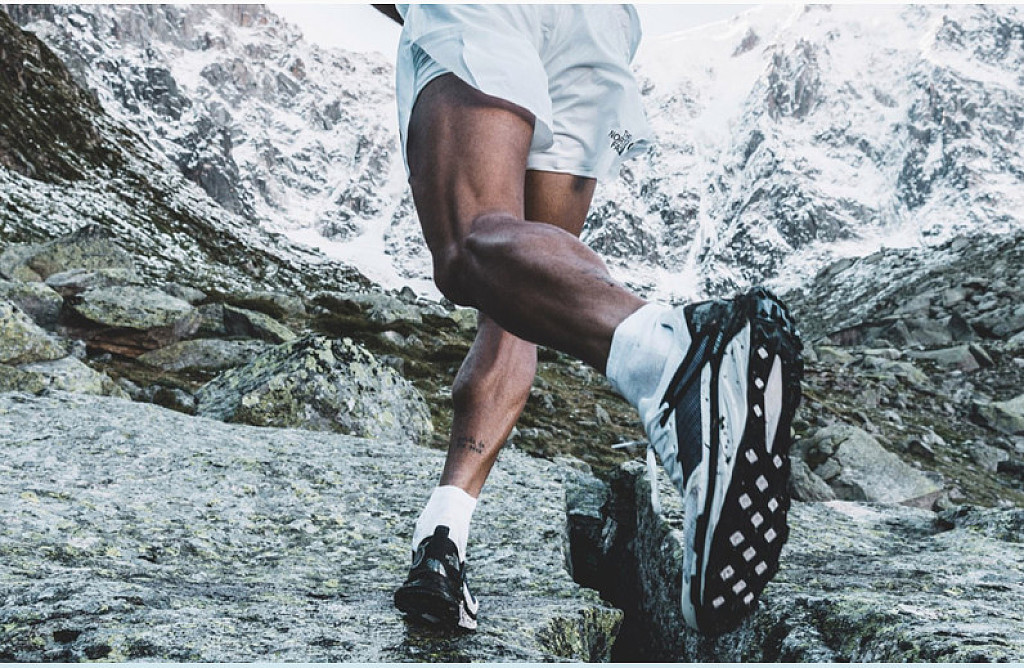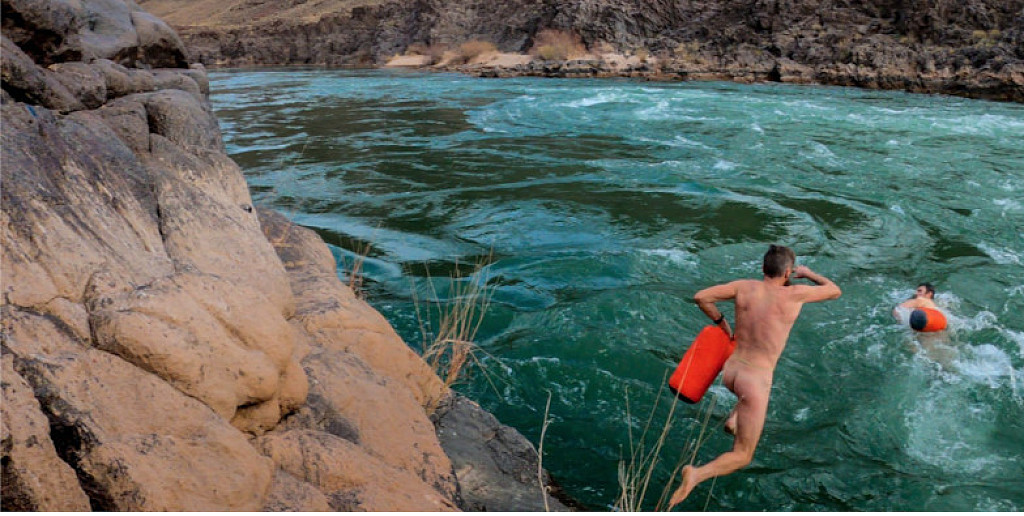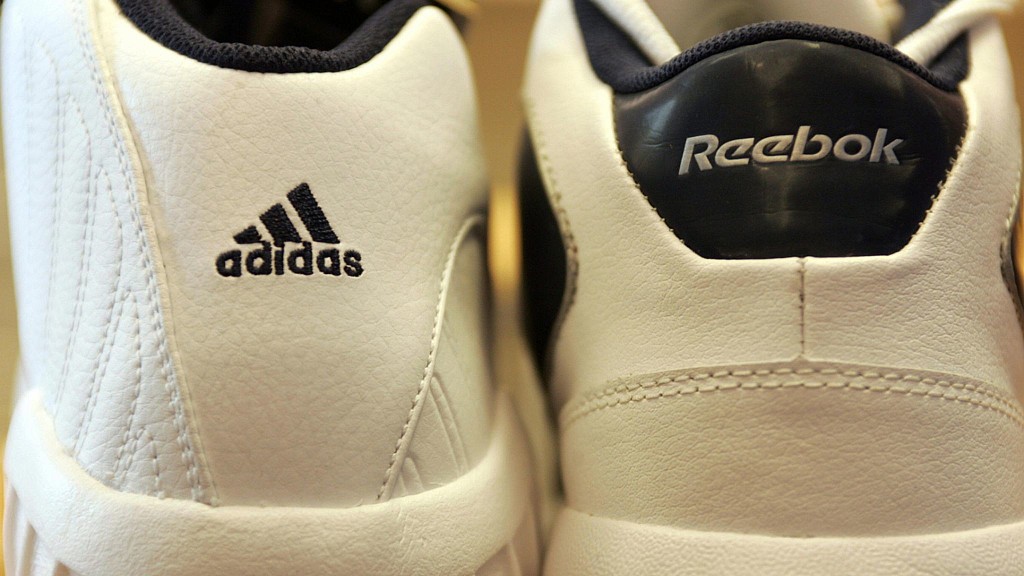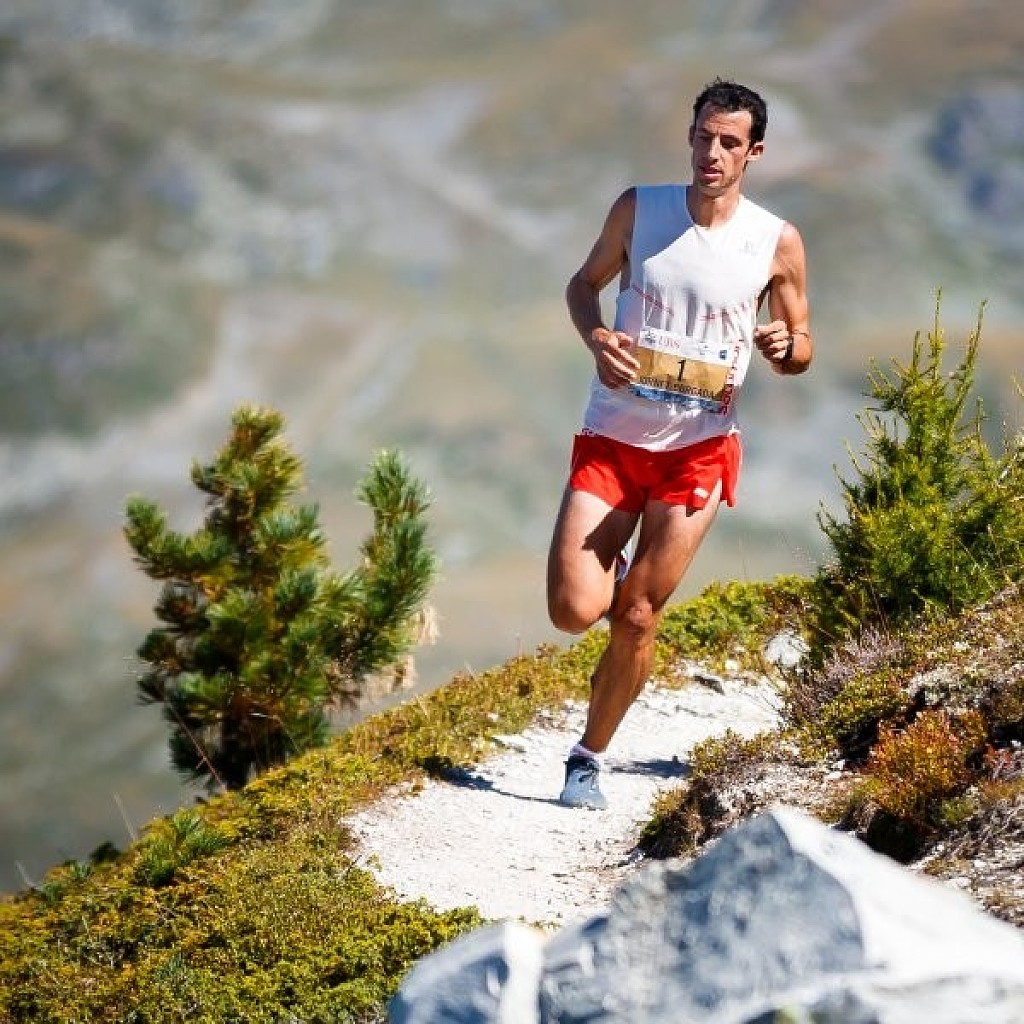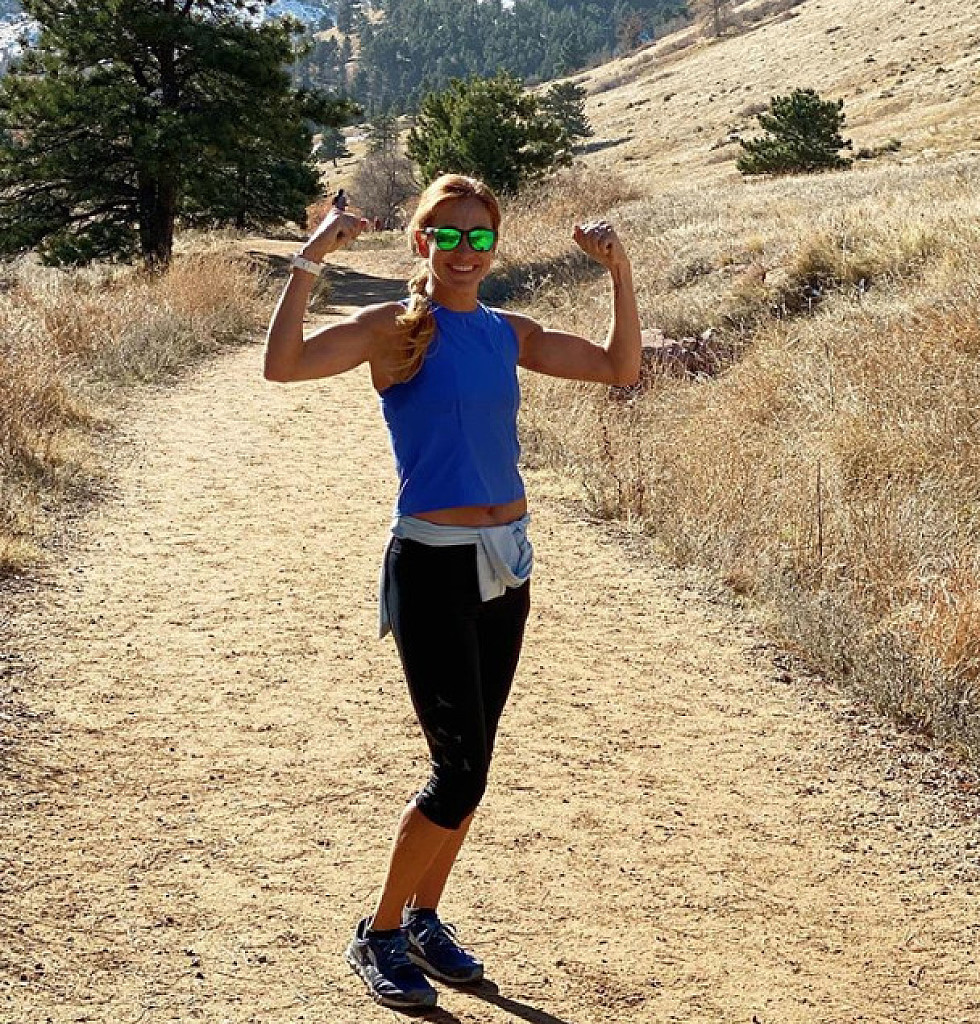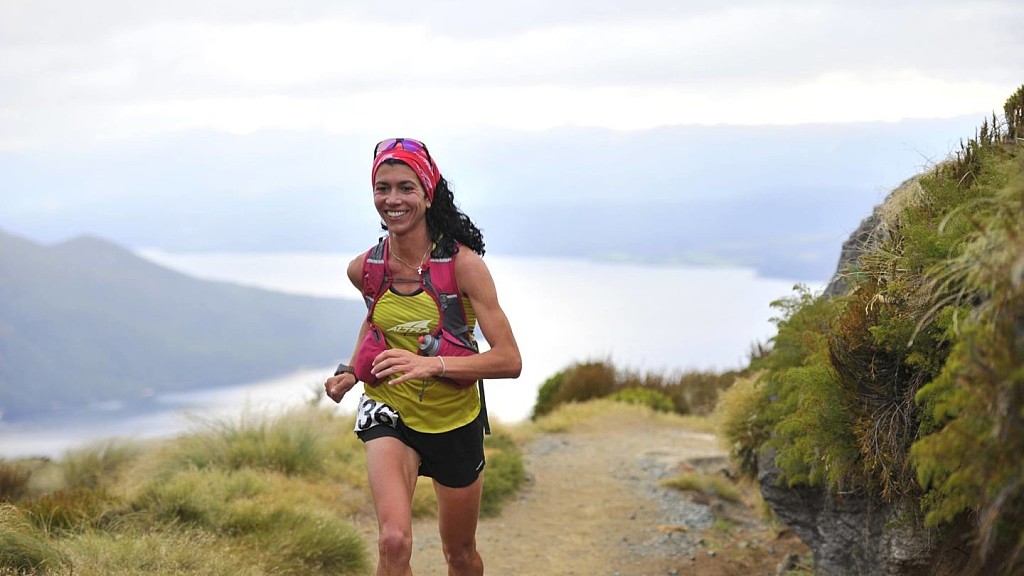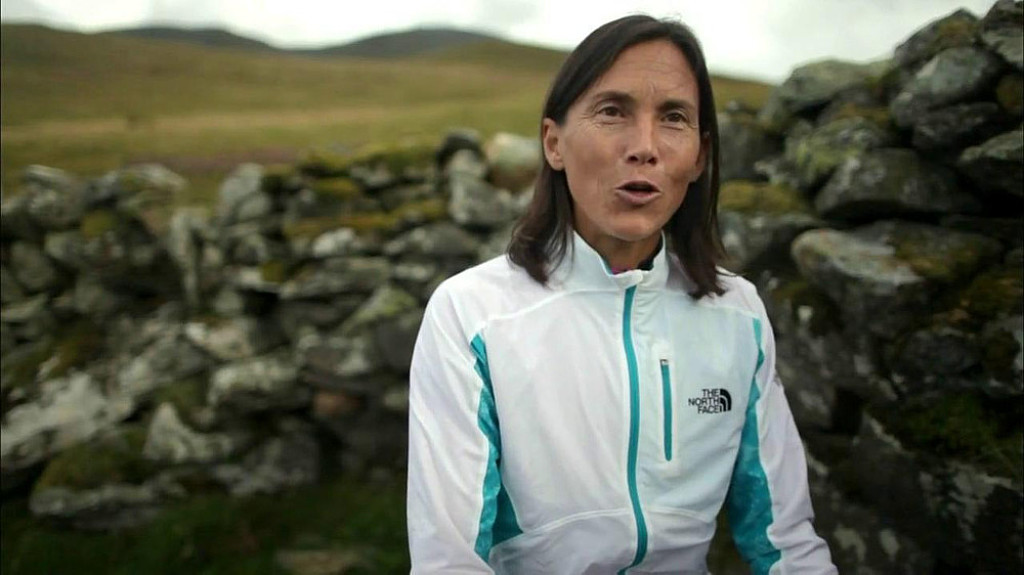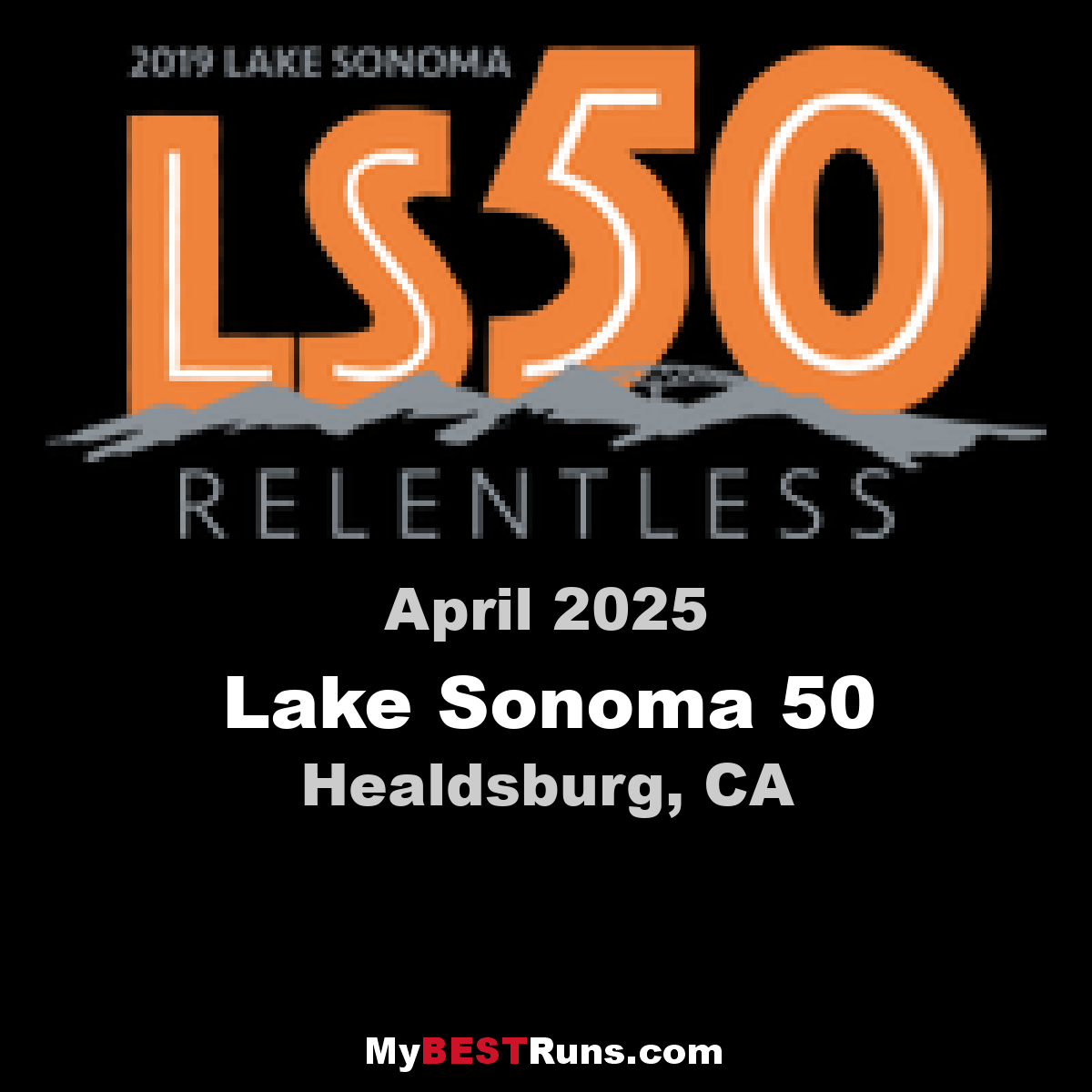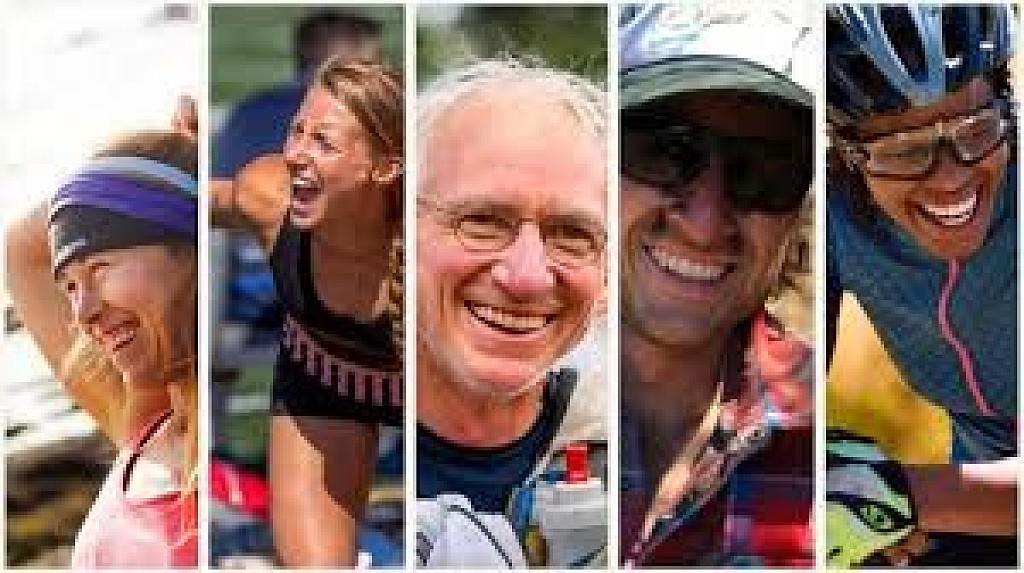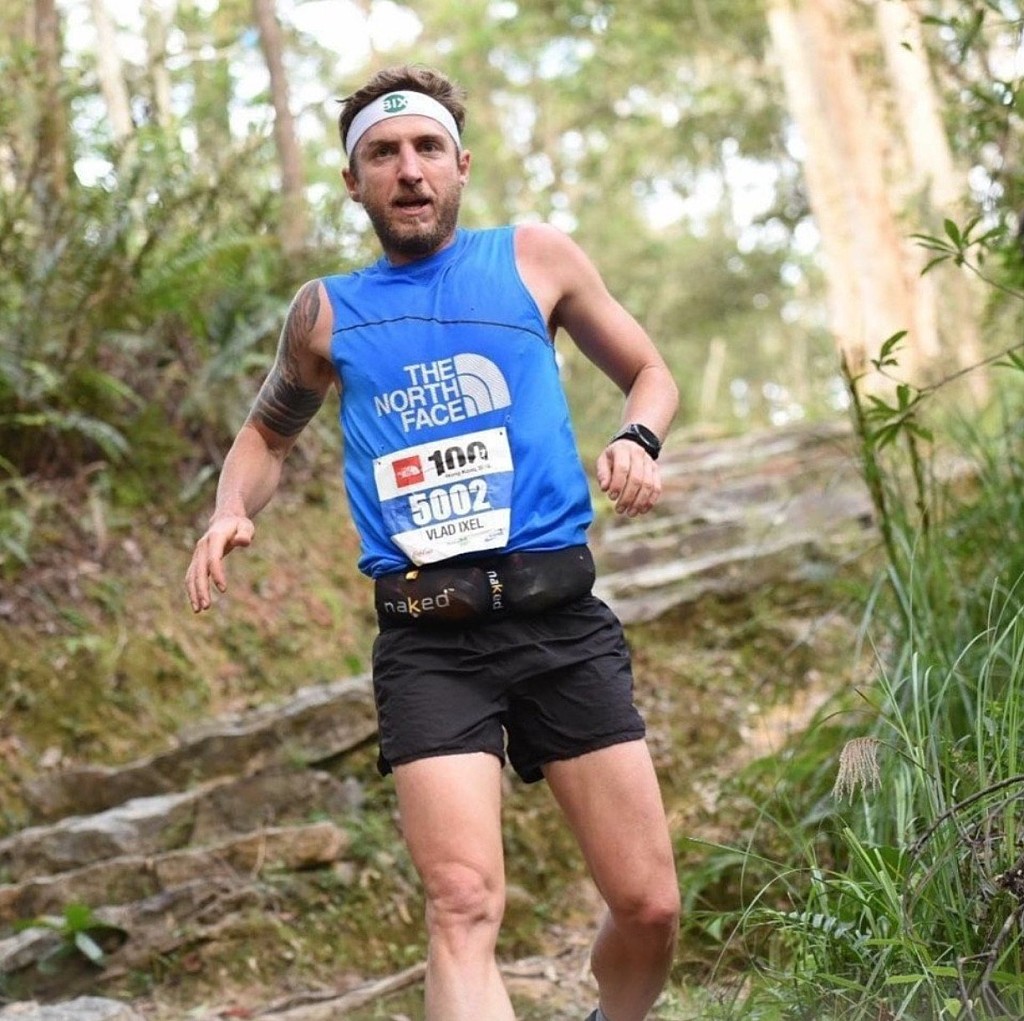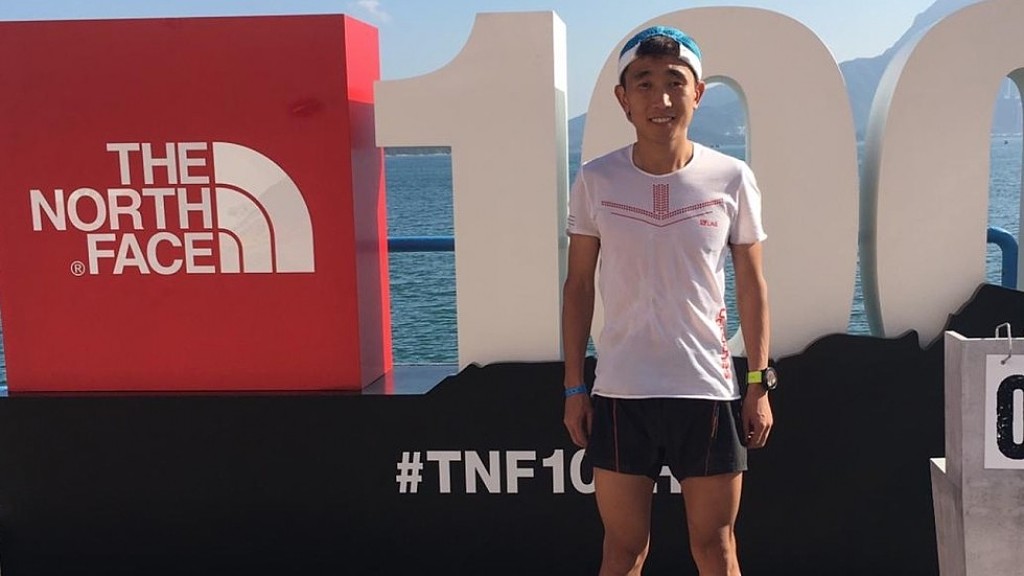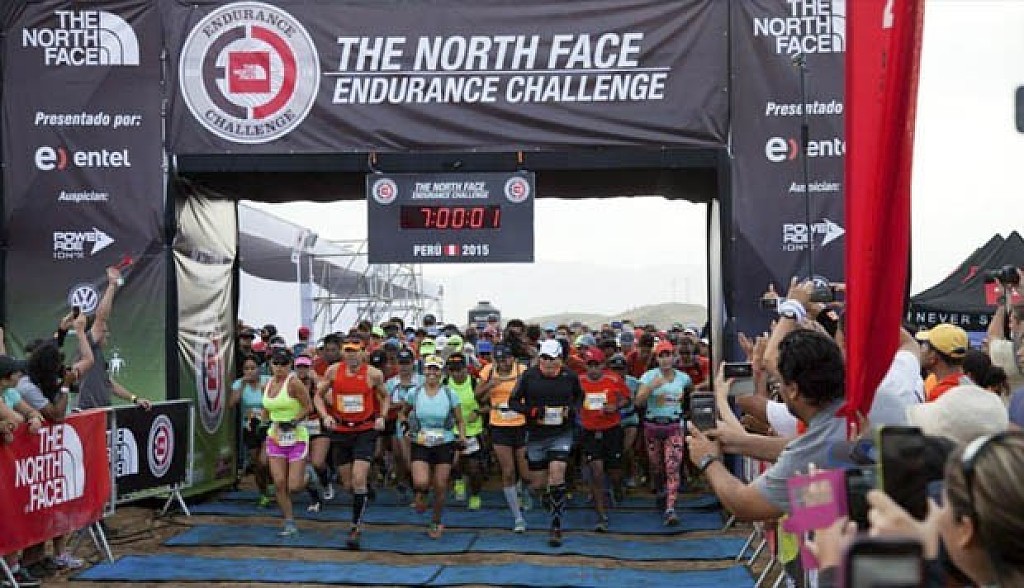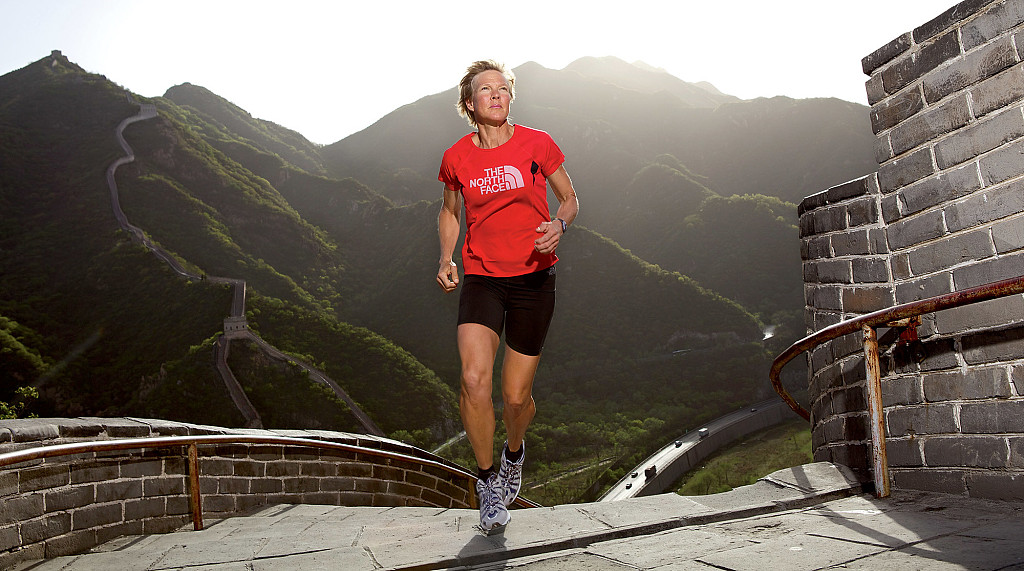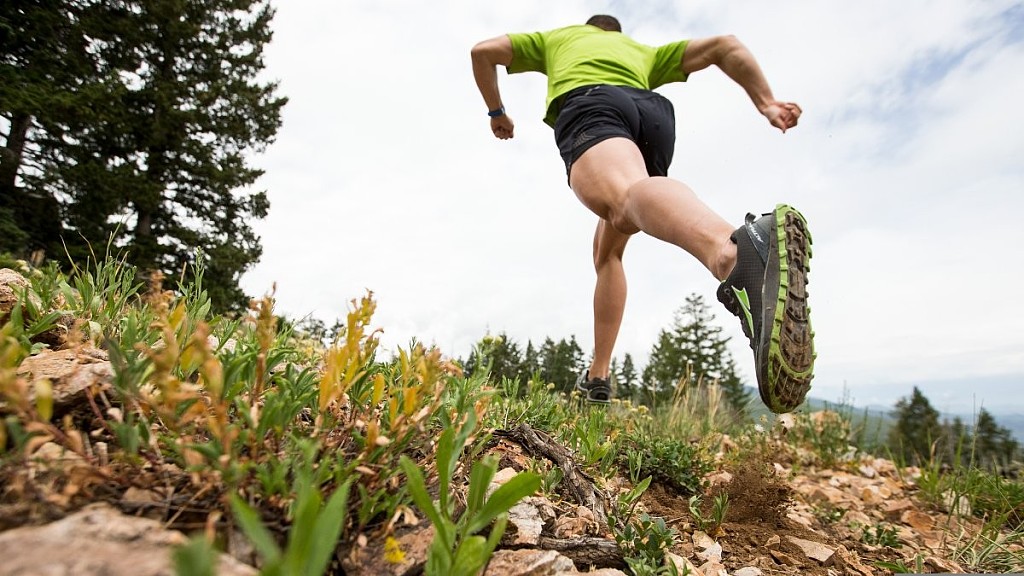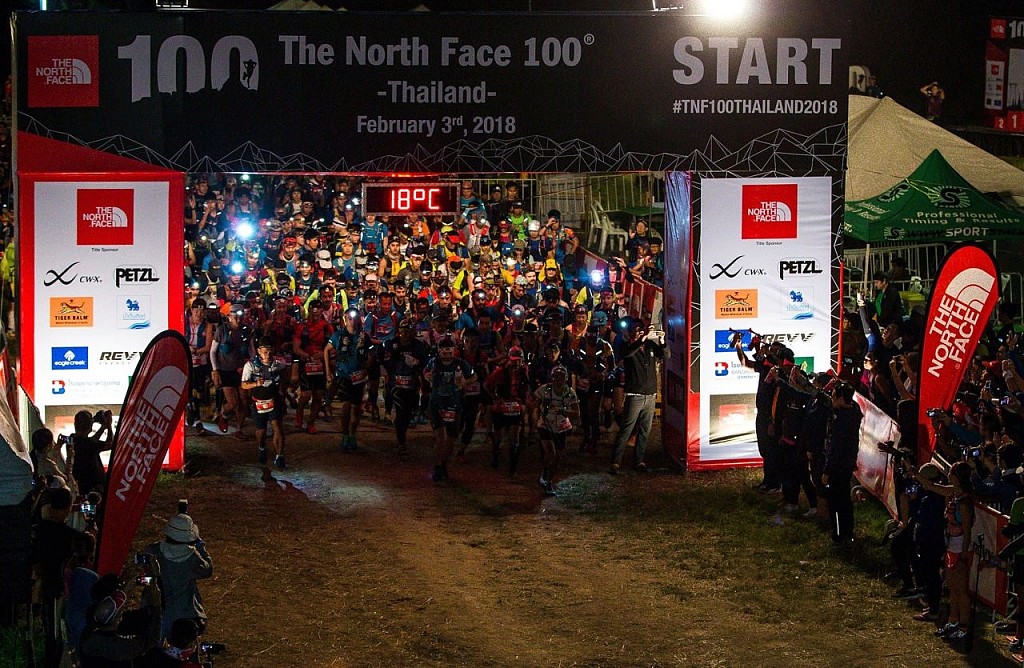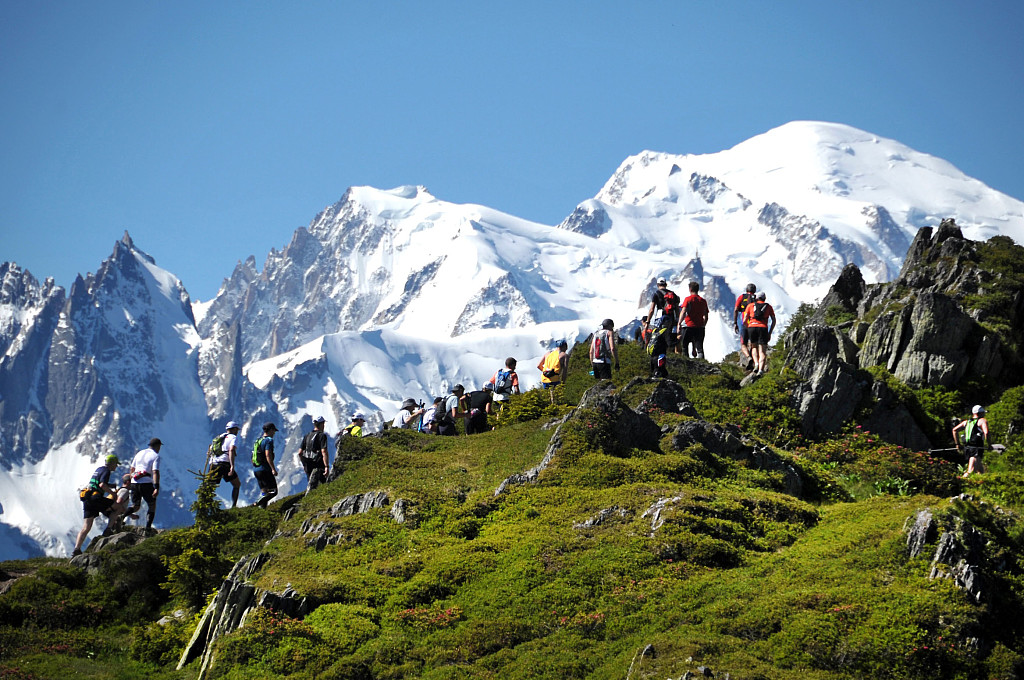Running News Daily
Running News Daily is edited by Bob Anderson. Send your news items to bob@mybestruns.com Advertising opportunities available. Train the Kenyan Way at KATA Kenya and Portugal owned and operated by Bob Anderson. Be sure to catch our movie A Long Run the movie KATA Running Camps and KATA Potato Farms - 31 now open in Kenya! https://kata.ke/
Index to Daily Posts · Sign Up For Updates · Run The World Feed
Articles tagged #North Face
Today's Running News
How Recreational Runners Get Through UTMB: 'It's All About Digging Deep into Yourself'
Wearing purple shorts, a blue and white tie-dyed T-shirt, a bright pink hat, a light blue Salomon hydration pack, fluorescent yellow-rimmed Oakley sunglasses, and a pair of Hoka Speedgoat 5 shoes, Chaiwen Chou was a vibe as she crossed the finish line of Ultra-Trail du Mont-Blanc (UTMB) on Sunday afternoon in Chamonix, France.
Chou, who had also freshened up the pink and purple tint of her hair before the race, stood out among the numerous other dusty and weary runners clad in more traditionally colored trail garb as they took their final strides in the epic 106-mile race around the Mont Blanc massif.
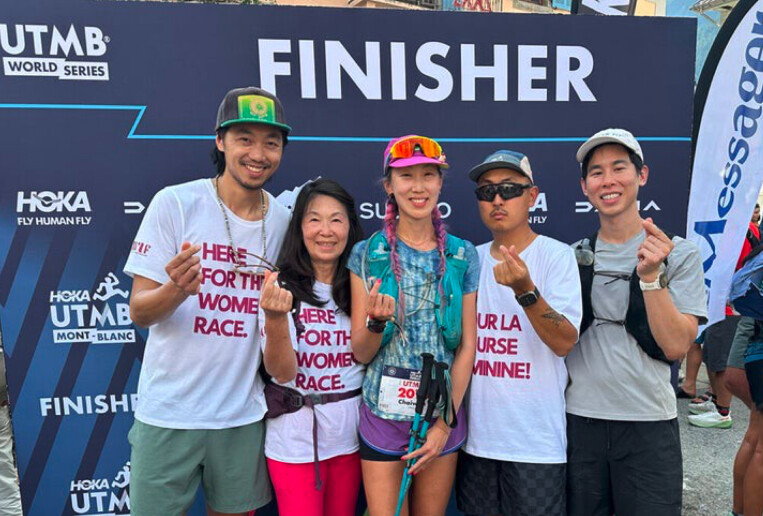
But what was most remarkable about the 41-year-old software developer from New York City was the huge smile on her face and expression of pure joy that emanated from her. When she arrived at the finish line after 45 hours and 15 minutes of running-about 75 minutes before the cutoff-she was beaming ear to ear and greeted with big hugs from her mom, brother, partner, and a good friend who helped crew her on her journey.
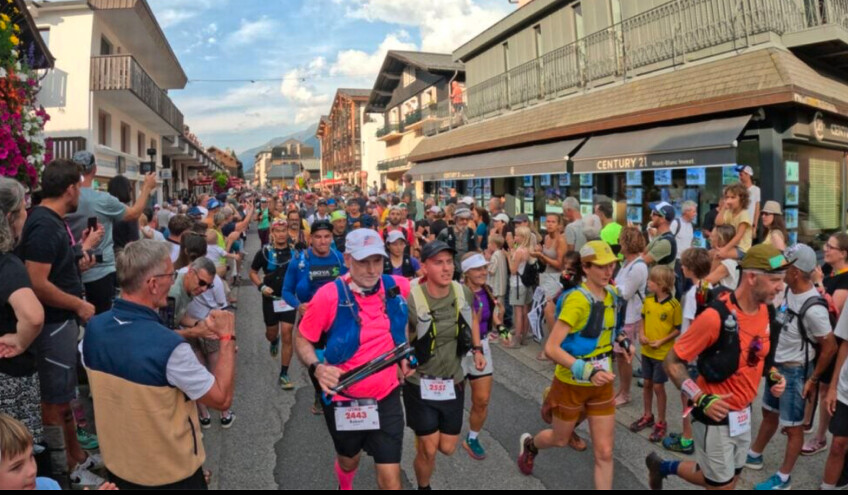
While her interest in running started on a bit of a whim a decade ago, her continued passion and progression have led her to run more than 30 trail running races, including the biggest and most celebrated one in the world. On Sunday, she was one of 95 American runners to complete the grueling UTMB course.
"So when I turned 30, I had this typical New Year's resolution, like, I want to get fit, I want to learn how to run," said Chou, who grew up in Massachusetts. "And then I met a friend who ran, and I started running with him and doing group runs. And then we started running trails, and we specifically entered The North Face Endurance Challenge, and that's where I ran my first marathon, and fell in love with trail running and then learned about ultrarunning and this whole world that I never even knew existed."For many recreational ultrarunners from around the world like Chou, UTMB sits at the top of their lifelong bucket list. It means starting at the same time as the elite professional runners on Friday evening in Chamonix, and maneuvering through the same rugged and aesthetic 106-mile loop with a daunting 32,000-feet plus of climbing and descending. It's historic, and the crowds and the energy around it are unparalleled.
It's also a monumental challenge to complete.
Trail Running's Infectious Buzz
Ultra-trail running is having a moment right now-especially since the end of the Covid pandemic-but it probably started a decade ago as the urge to run beyond the marathon gained mainstream traction and destination races around the world started to become desirable goal races for recreational runners.The North Face Endurance Challenge began as a singular 50-mile championship-style trail race near San Francisco in 2006 with a $30,000 prize purse, but it evolved into a multi-distance race weekend (from 10K to 50 miles) aimed at encouraging runners of all abilities to immerse themselves in the sport. After a few successful years of the event in Mill Valley, California, it expanded to several locations across the U.S.-upstate New York, Madison, Wisconsin, and Washington D.C., among others-and around the world.
Although The North Face pulled the plug on the series in late 2019 with a suggestion that it was going to reimagine the event format, nothing ever materialized after the Covid-19 pandemic temporarily disrupted the world-and specifically running events-in 2020. But those events played a big role in introducing runners and non-runners alike to the unique aspects of trail running, and many of those who caught the bug-like Chou-have continued to chase their passion in global events like the UTMB World Series.
Chou and her friends returned to The North Face Endurance Challenge four years in a row and she upped the ante each time, going from the marathon to the 50K and finally to consecutive finishes in the 50-miler. She competed in the 50-mile race in San Francisco in 2017 and 2019 and then started traveling to other races around the U.S. and eventually around the world. By 2020, she had completed the Madeira Island 115K race in Portugal and the Tarawera Ultramarathon 100-miler in New Zealand.
Once Covid subsided, Chou set her sights on trying to get into UTMB, which she did by collecting running stones and finishing seventh at the Grindstone 100 amid torrential rain storms last September in northwest Virginia. Her training for UTMB was interrupted in February when, just a week after she found out she secured an entry into UTMB through the lottery, she broke her ankle. Then once she got to Chamonix a week before the race, she smashed her left knee on a shakeout run and it swelled up pretty badly.
As such, her UTMB experience was rougher than she had hoped-the 80-degree heat and the 32,000 feet of vertical gain and descent pushed her to her limits-as she had challenges fueling consistently and also got sick several times. But she persevered and reached her primary goal of finishing.
Officially, she was the 1,542nd finisher out of 1,760 runners who completed the full loop. (A total of 1,001 runners started but did not finish.) She did whatever it took and she crossed the finish line.
"So this is the first time I've been in the Alps, and I'm just blown away by how beautiful it is," she said. "Even though I was in pain pretty much the whole race because the climbing and the elevation gain here are insane compared to the East Coast! But it was just so beautiful everywhere. It's pretty crazy. But you get to be out there all day though, so that's fun."Every Runner Has a Story
Becky Convery only started running four years ago in the middle of the Covid lockdown. What started as short, occasional runs turned into a passion for trail running that was fueled, in part, by doing group runs with the Virginia Happy Trails Running Club.
Like Chou, Convery also qualified for UTMB through the Grindstone 100. The 58-year-old Washington D.C. attorney almost quit that race, but she dug deep to finish. During UTMB, Convery dealt with GI issues from early on in the race and couldn't keep any food down. It was so bad, she almost dropped out at the 51.5-mile aid station in Courmayeur, Italy. But then she thought of Wayne Chang, a running buddy from Virginia, who did just that last year and immediately regretted it. With her friend's experience top of mind as she struggled, Convery persevered and finished in 45:27 with an hour to spare."I wanted to quit at Grindtone last fall. I was miserable and just wanted to go to bed, but he wouldn't let me quit," Convery said. "He's like, 'Look, I quit UTMB and I woke up a couple hours later, and I was like, 'Oh my God, what have I done?' So when it got hard out there (during UTMB), I thought of Wayne, and even though I couldn't keep food down, I said to myself, 'What would Wayne do?' He'll kill me if I quit, so I knew I couldn't quit. So I just kept going."
As much as UTMB gets considerable international notoriety for the livestream and media coverage around the elites-and understandably so, it draws many of the world's best runners-at the heart, UTMB is a personal journey of courage, commitment, and hope for most of the 2,800 runners who toe the starting line.
And really, that's what the entire sport of ultra-trail running is all about and what differentiates it from road racing. For many, it's not about racing at all-competing against other runners or even the clock-it's about challenging yourself and the natural terrain in pursuit of a dream that might seem like it's on the realistic edge of your abilities.
"It's all about digging deep into yourself," Convery said. "With this race, it's so international and there are so many nations represented, it's just an amazing time up there. Even though most people don't speak each other's language, everybody gets it. Everyone is pulling for each other. It's a great environment out there. I'm glad I made it."
Going the Distance
That's always been the case for 67-year-old Mike Smith, a retired resident of Santa Fe, New Mexico, who reached the finish line 15 minutes after Convery. It was Smith's second year in a row finishing UTMB, and because he won his age group at the Canyons 100K in April, he'll likely be back next year.
"The best part about it is always the people," Smith says. "But, oh gosh, chasing the time cutoff at that last aid station, that hike up to the La Flegere ski area, that's always a challenge."Smith relishes in those kinds of ultra-trail challenges. By reaching the finish line in Chamonix, he recorded the 224th 100-mile trail race finish of his career dating back to the mid-1990s. According to an ultrarunning history site, he ranks No. 2 in the world in all-time 100-mile finishes and first among 100-mile trail races. (Last year's UTMB was his 205th finish, which means he completed 18 100-mile ultra-trail races in the interim.
"This is always a spectacular finish," said his wife, Sandra, who wrote a book about what it's like to crew her husband at races. "This is one of the most exciting finish lines there is. The finish lines at smaller races are exciting because there's such a close community of people, but here, there are so many people from around the world, and that's just wonderful."
In all, 2,761 runners started this year's UTMB and 1,760 finished, including 95 U.S. runners who reached the finish line (out of 152 American starters) under the cutoff. Frenchman Vincent Bouillard was the overall winner in 19:54:23 on Saturday afternoon, but 20 hours later there were still about 1,000 runners moving toward the finish line and trying to beat the 46.5-hour cutoff on Sunday afternoon. Among the 95 U.S. finishers, 41 completed the course after the 40-hour mark.
Lamont King, 51, a runner from Roseville, California, has watched and been inspired by runners finishing in the golden hour of the Western States 100 as a fan and as a board member of the race for years. So finishing UTMB on his first try in 45:59-about 30 minutes before the cutoff-was a special moment for him.
"The race was very, very tough. We just don't have that kind of vertical in California where I'm from," said King, who has been trail running for 20 years. "But it's just amazing to be in this scenery in the mountains. It's just fantastic, and it makes up for a little bit of pain. I did have to push a little bit more than I probably would've liked, but I got it done. Coming in with all those people cheering for you in that final finish is almost overwhelming. It's just beautiful."
by Trail Runner Magazine
Login to leave a comment
American Katie Schide Shatters Courtney Dauwalter’s Course Record to Win UTMB
She’s now the third woman to win both Western States and UTMB in the same year.
Katie Schide is on a tear.
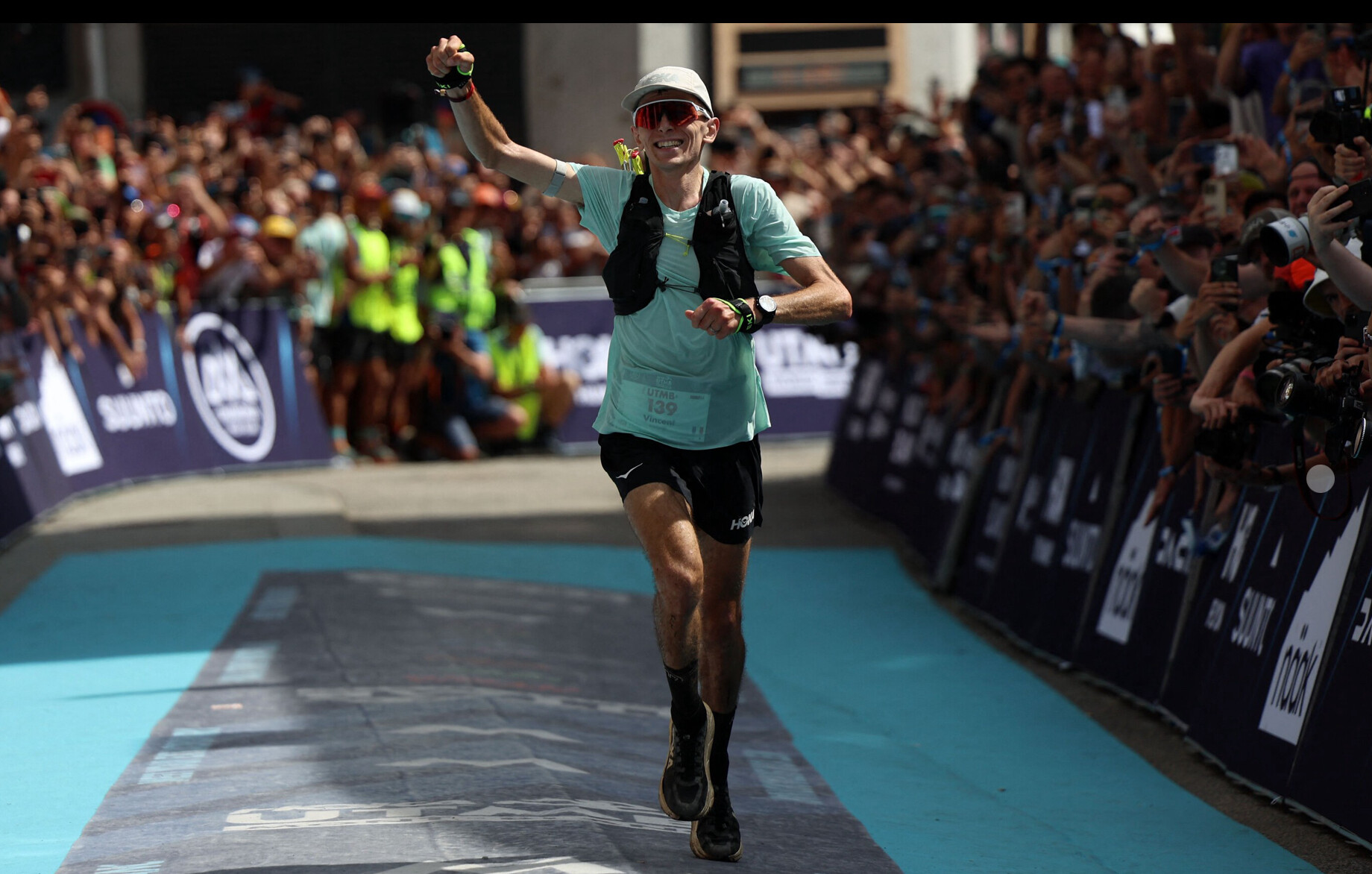
On Saturday, the American won the women’s race at the Ultra-Trail du Mont-Blanc (UTMB) in dominant fashion, finishing the 109-mile race in 22 hours, 9 minutes, and 31 seconds. Her time is 21 minutes faster than Courtney Dauwalter’s course record of 22:30:54 from 2021.
Schide, 32, is undefeated this year, winning the Canyons 100K in April and the prestigious Western States 100 in June.
Ruth Croft of New Zealand was 39 minutes behind Schide in second place (22:48:37). She passed Canada’s Marianne Hogan—who would finish third in 23:11:15—just after the 100-mile mark. Dauwalter, who won the Hardrock 100 on July 12, did not compete in this year’s edition.
In the men’s race, Vincent Bouillard of France was not favored to win, but he ultimately took the crown. He went to the lead after 48 miles and never relinquished it, crossing the finish line in Chamonix in 19:54:23. His compatriot, Baptiste Chassagne, was next to finish in 20:22:45, while Ecuador’s Joaquin Lopez placed third (20:26:22).
Last year’s champion, Jim Walmsley of the U.S., withdrew just after 50 miles because of a knee issue, according to a post on his Instagram story. He remains the only American man to win the race.
UTMB has been contested since 2003. The course—which slightly changes year-to-year—starts and ends in the French Alpine town of Chamonix and traverses through Italy and Switzerland along the way, covering over 30,000 feet of elevation gain.
This is Schide’s second time winning the event after taking top honors in 2022. Originally from Maine, Schide now trains in France and is sponsored by The North Face.
In the final 7 kilometers, a downhill section, she was over 20 minutes ahead of course record pace, but she started limping. The buffer, however, was enough, and by the end, the hitch in her stride had mostly dissipated.
Schide said in a post race interview on the UTMB broadcast that her main goal was to dip under the 22-hour barrier, followed by a secondary goal breaking Dauwalter’s time from 2021. Schide went out hard in the first half—like she did in 2022—but she said winning two years ago gave her some much-needed context.
“I think this race, I just went in more confident in myself and I wasn’t surprised that I was fast,” she said. “Whereas in 2022, I was kind of freaking out because I was like “Oh, I didn’t really mean to do that.’ But this time, I meant to do it, and I was just focused on trying not to die too hard at the end.”
Schide now joins Dauwalter (2023) and Nikki Kimball (2007) as the third woman to win both Western States and UTMB in the same year.
Login to leave a comment
UTMB Is Having a Golden Moment. But It’s Delicate.
After a year that included a maelstrom of controversy, the world’s most prominent ultra-trail running event has righted its path
“It felt like a golden era of trail running.”
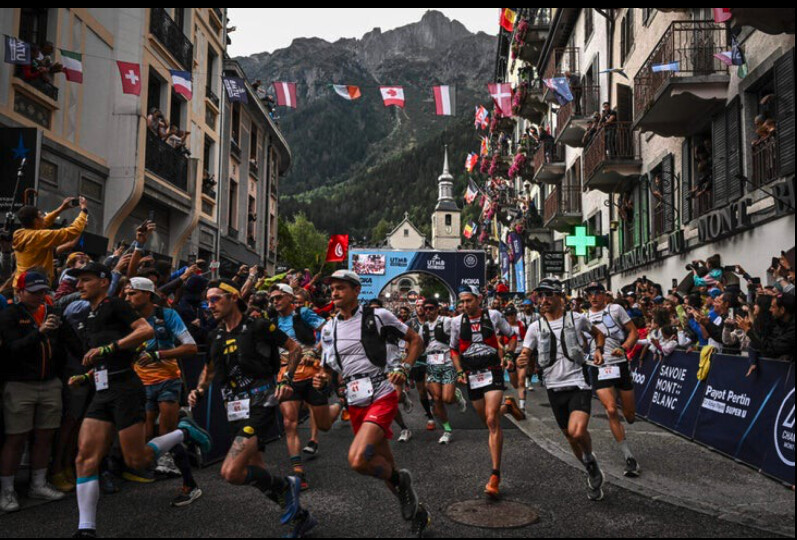
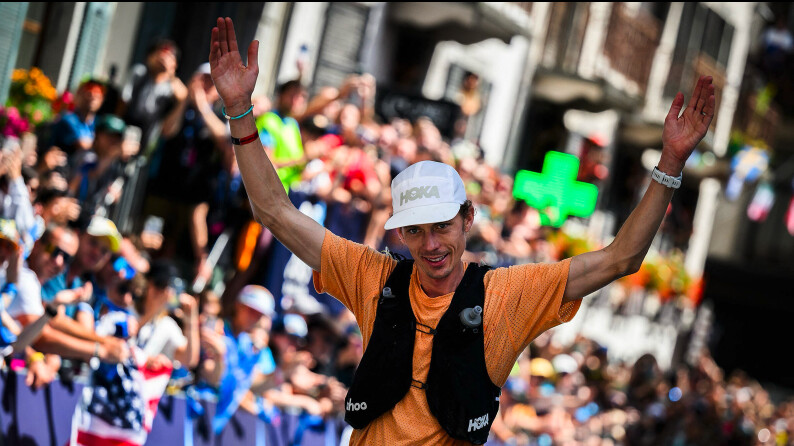
That quote came from Keith Byrne, a senior manager at The North Face and a UTMB live stream commentator for nearly a decade, who was talking about last summer’s UTMB World Series Finals in Chamonix, France.
The UTMB races during the last week of August last summer were, I thought, the most alluring in the event’s 20-year history.
After years of being frustrated by the course, American Jim Walmsley finally put it all together for a victorious lap around Mont Blanc. In doing so he became the first U.S. man to win the race, setting a course record of 19:37:43. He and his wife, Jess, had moved from Arizona to live full-time in France to make it happen. And then there was Colorado’s Courtney Dauwalter, who won the race handily in 23:29:14 to notch her third victory and continue the strong legacy of American women on the course. The win felt extra historic because it made her the first person to win Western States, Hardrock, and UTMB in the same year—arguably the three most legendary and competitive 100-mile events in the world, and she dominated each one.
The events came off without a hitch and included record crowds in Chamonix, plus a record 52 million more tuning into the livestream.
Throughout the fall and winter, harmony and happiness seemed to give way to chaos and discontent. But a year later, as the UTMB Mont Blanc weeklong festival of trail running kicks off on August 26, everything seems back to normal in Chamonix. What happened along the way is a tale of drama, perhaps both necessary and unnecessary, all of it culminating in course corrections by the multinational race series.
In short, what a year it has been for UTMB.
And now, hordes of nervous and excited runners from all corners of the globe are descending on Chamonix for this year’s UTMB Mont-Blanc races. Registration for UTMB World Series events is reportedly up about 35 percent year over year with even greater growth in interest for OCC, CCC and UTMB race lottery applications. There is more media coverage, more pre-race hype, and more excitement than ever before. More running brands are using the UTMB Mont Blanc week to showcase their new running gear with media events, brand activations, and fun runs. Even The Speed Project—although entirely unrelated to UTMB—chose Chamonix as the starting point of its latest so-called underground point-to-point relay race to try to catch some of the considerable buzz UTMB is generating.
So what happened? Did the UTMB organization do its due diligence and make amends with several significant changes in the spring? Was the angst and stirring of emotions just not as widely felt as the fervent bouts of Instagram activism claimed it to be? Have the participants and fans of the ultra-trail running world suffered amnesia or become ambivalent? Or is it all a sign of the race—and the entire sport of trail running—going through growing pains as it adjusts to the massive global participation surge, increased professionalism, and heightened sponsorship opportunities?
On the eve of another 106-mile lap around the Mont Blanc massif, I wanted to take a look at what happened and the current state of UTMB’s global race series that culminates here in Chamonix this week.
We caught a glimpse of what was to come shortly before UTMB last year, when the race organization announced the European car company Dacia as its new title sponsor. A fossil-fuel powered conglomerate didn’t sit well with some fans of the event, coming amid an era of widespread climate doom (even though the brand would be highlighting its new Spring EV at the UTMB race expo.) The Green Runners, an environmental running community co-founded by British trail running stars Damian Hall and Jasmin Paris, called it an act of “sportswashing” and released a petition calling on UTMB to denounce the partnership. (Hall even traveled all the way to Chamonix to deliver the petition in person.)
These grumblings of discontent and others that followed exploded into a social media firestorm shortly after UTMB. In October, it became public that UTMB had moved to launch a race in British Columbia, Canada, just as a similar event in the same location was struggling with permitting. A he-said, she-said back-and–forth left onlookers with whiplash. Then on December 1, UTMB livestream commentator Corrine Malcolm announced on Instagram that she had been fired and in late January, a leaked email from elite runners Kilian Jornet and Zach Miller to fellow athletes called for a boycott of the race series. All of it, jet fuel for social media algorithms.
“We’re at a turning point in trail running, but we can keep the core values if the community stands up,” the Pro Trail Runners Association secretary, Albert Jorquera, told me at the time.
In the midst of these dramas, I interviewed race founders Catherine and Michel Poletti over lunch at a Chamonix cafe. For nearly a decade now, I have met with the couple for candid conversations that helped frame online articles and magazine stories, and most recently for the book, The Race that Changed Running: The Inside Story of UTMB.
I plunged headlong into two articles with hopes of explaining it all. There was so much heat swirling around the UTMB stories, and so little light.
“The very thing that made ultrarunning so bonding was being torn apart by the community itself through social media,” said Topher Gaylord. A former elite runner who tied for second in the inaugural UTMB in 2003, Gaylord engineered UTMB’s first title sponsorship with The North Face and has been a close supporter of the Polletis for 20 years. “Some players are using social media to divide the community. That’s super disappointing.”
To me, it felt like the aggressive online activists were winning the day. Trail running suddenly seemed polarized, infected with the intertwined social media viruses of false indignation and close-mindedness. Twice, I deep-sixed my article drafts. Friends and editors convinced me they wouldn’t be read dispassionately. Who wants to be handed a fire extinguisher, when your goal is to torch the house?
Well, what a difference eight months can make. We now have some perspective and, with it, some answers.
Since its earliest days, UTMB’s volunteer founding committee believed in the values of the sport. The very first brochure produced for the race—a mere sheet of paper—featured a paragraph on values. In later years that statement became much more comprehensive, expanding to cover a wide range of topics and the race’s mission to support and protect them.
But maintaining those values in an organization that has gone from a singular race with a literal garden-shed office to a 43 global event series with a staff of more than 70 full-time employees is tricky at best. In an interview once, Michel Poletti paused, asking if I had seen a photo of a mutual friend that was making the rounds. He was climbing one of Chamonix’s famed needle-sharp aiguilles, one foot on each side of a razor sharp ridge—a perilous balancing act, big air on each side. It was his metaphor for trying to move ever up, while balancing business growth and heartfelt values.
Over the course of dozens of hours of interviews with the Polettis, I came to learn one thing: UTMB always moves forward up the ridge. In the process, UTMB corrects its course. It starts with a careful analysis after each edition, evaluating pain points in areas such as logistics, security, media, traffic, and others, discussing how they can be addressed. Historically, those course corrections haven’t been at the pace others might want—especially since the social unrest that developed during the Covid pandemic—but the organization has a reliable pattern of steadily addressing concerns.
And so, not too many weeks after that lunch meeting, UTMB set to work. First came a heartfelt effort they kept under the radar—traveling around the U.S. to listen and learn. They spent two weeks in the U.S. in February, visiting with American athletes, race directors, journalists, consultants, and their Ironman partners. “We need to learn from our mistakes and from this crisis,” Michel said.
Methodically over the ensuing months, UTMB rolled out a series of changes. Some were aimed at directly addressing the controversies, others were overdue for what is, by any metric, the world’s premier ultra-trail running event.
“My hope is that the trail running community understands that we are human,” Catherine had told me over the winter.
Four months ago, at the end of April, the race organization announced that Hoka would become the new title sponsor of UTMB Mont-Blanc and the entire UTMB World Series through 2028. It was a huge move because Hoka, one of the biggest running brands in the world, essentially doubled-down on its support of UTMB and trail running in general. The five-year deal brought benefits other than cash, too. Hoka has a strong history of inclusivity and growing representation among marginalized communities, an area UTMB has announced it intends to focus more on beginning this year. The deal also moved Dacia out of the title sponsor limelight, instead bringing a brand with a strong reputation in trail running to the fore.
Dacia was shifted to the role of a premier partner in Europe, and now plays an integral part in a new eco-focused mobility plan UTMB updated in July. Fifty of their cars can be signed out for use by over 70 staff and 2,500 volunteers, encouraging them to arrive in Chamonix using public transportation instead. The move is estimated to eliminate 200 vehicles driving into the valley. (The organization’s new mobility plan will transport an estimated 15,000 runners and supporters, eliminating the need for approximately 6,000 cars during the UTMB Mont-Blanc week. On average, a bus will run every 15 minutes between Chamonix and Courmayeur, Italy, and Chamonix and Orsières, Switzerland.)
In May, UTMB announced a new anti-doping policy it had developed with input from PTRA. The organization committed to spending at least $110,000 per year, money that will be allocated to test all podium finishers and a randomized selection of the 687 elite athletes in attendance. The new policies will be implemented by the International Testing Association, an independent nonprofit that has also conducted two free informational webinars for the 1,400 UTMB Mont Blanc elite runners.
Not long after the announcement, Catherine Poletti suggested this was just a start. Speaking at TrailCon, a new conference held in Olympic Valley, California, on June 26, she said, “It’s a first big step for us. And we’ll continue to develop this policy.” (The most important anti-doping protocol may still be beyond UTMB, however. “The elephant in the room is that we need a coordinated approach to establish out-of-competition testing,” Tim Tollefson, an elite U.S. runner and director of the Mammoth TrailFest in California, who spearheaded independent testing at his event in 2023. “Individually, we’re just lighting our money on fire.”)
In mid-June, UTMB addressed a longtime issue with top runners—prize money. A chunk of the funding from the ratcheted-up Hoka sponsorship was directed to supporting the bigger prizes for the OCC, CCC and UTMB races in Chamonix—about $300,000 this year, nearly double of 2023—as well as more prize money for the three UTMB World Series Majors. (The sequence was intentional. The organization wanted a new doping policy in place before increasing prize purses, since large cash awards are often thought to lead to a growth in doping.)
It’s a move that was long overdue—the most celebrated marquee event in any sport should reward its top athletes more than any other event—but not possible without Hoka’s increased involvement. The proposal was shared with PTRA in advance of the announcement, and the group provided feedback that was incorporated into the final divvying up of the purse. The total amount spent on prize money across all UTMB races is now more than $370,000.
“We increased the prizes quite dramatically,” said UTMB Group CEO Frédéric Lenart. “It’s very important for us to support athletes in their living.”
Finally, just last week, UTMB announced a new department within the company called “Sport and Sustainability.” The group is headed by longtime UTMB staffer Fabrice Perrin. He was a driving force behind the creation of UTMB’s live coverage back in 2012. Heading up relations with the pro athletes will be longtime elite trail runner Julien Chorier. Nicolas LeGrange, UTMB’s Director of Operations, will be in charge of sustainability and DEI, Diversity, Equity Inclusion.
On the DEI front, UTMB is calling its strategy “leave no one behind,” and they promise new initiatives coming this fall so that, according to Perrin, “every athlete feels a sense of belonging within our community,” he says. “I am committed to ensuring that we perfect symbiosis with the entire community of trail running.”
UTMB has already begun to embrace adaptive athletes, something it was criticized for lacking as recently as last year. This year’s UTMB Mont Blanc races will feature a team of 12 adaptive athletes who will be participating in the MCC, OCC and UTMB races. Under the direction of adaptive athlete and team manager Boris Ghirardi, who lost his left foot and part of his left leg after a motorcycle accident in 2019, the race organization recruited the athletes from around the world to showcase how adaptability and resilience are key elements of the UTMB values.
“I proposed this program to make a concrete action around adaptive athletes and the inclusion policy, and to prove that it was possible,” he said this weekend. “If you really get everyone working on this, you can change the game.”
And with that, UTMB Mont-Blanc 2024 is underway, resuming the golden era status that Byrne raved about last August. Starting this past weekend, banners have been unfurled over Place du Triangle de l’Amitié in the heart of Chamonix, kicking off the carefully choreographed trail running Super Bowl that is UTMB. The excitement begins on August 26 and culminates as the race for UTMB individual crowns reach a tipping point on August 31. (The golden hour of the final finishers on September 1 will be something to behold, too.)
“It’s like wrapping the Tour de France, Burning Man, and the biggest industry trade show into one giant, week-long festival,” Gaylord says. “It’s an amazing week for our sport, one of the biggest showcases we have.”
The aura of Chamonix and the opportunity to run a race there is drawing as much or more interest than ever before. It is perhaps the essence of what will keep the UTMB World Series afloat into the distant future. Runners will continue to chase Running Stones at qualifying events around the world, knowing the carrot of running one of the races around the Mont Blanc massif is second to none.
Trail running is booming on a global scale, and it’s not just UTMB shouldering the burden or reaping the benefits. The Golden Trail World Series, Spartan Trail Running, Xterra Trail Running—and even the World Trail Majors, Western States 100, and dozens of other more prominent trail races—are all trying to get a bigger piece of the pie, either by way of money or relevance.
UTMB Mont Blanc, as trail running’s most important race, is at the very beating heart of it all. And trail running is a soul sport, so when change and growth happen, it can feel threatening to all of us whose lives have been changed for the better by time spent with dirt underfoot and blue sky above. UTMB is big enough now that it’s urgently important that it make changes judiciously and preemptively.
As the world’s most significant trail race, the consequences of UTMB’s choices will ripple throughout the ecosystem. UTMB understands this. “Do we owe something to trail running? Yes, of course we do,” Michel Poletti once told me. That’s truer than ever now.
At TrailCon in June, Catherine Poletti summed up UTMB’s challenge. “Trail running is changing around the world. We’ve seen that evolution over 20 years. We need to adapt, to find a good balance, to accept different models and ways of organizing.”
Back in August 2021, I wrote an article here called, “UTMB, Don’t Break Our Hearts.” It came the summer after the organization announced its investment from the Ironman Group. Change– big change– was everywhere. Could the race around Mont Blanc maintain its soul and passion amid talk of multinational sports marketing, we all wondered? Michel Poletti closed the interview by saying, “Nous prenons un rendez-vous dans trois ans.” Simply translated: “We’ll schedule an interview in three years.”
Three years is now, and both UTMB and trail running’s landscape have changed dramatically, if not literally then certainly figuratively. We’ve seen UTMB adjust its rudder this past year, responding to concerns. Perhaps not at the pace any individual or specific group would like, and not to the extent some would wish. But it’s happening, and for that we should all breathe a cautious sigh of relief. Because if you love trail running, you have to care about what happens at the world’s biggest trail race.
As I write this in Chamonix very early on the morning of August 26, overcast skies are parting and blue skies are in the offing. The forecast for the week ahead is for bright sun with a few clouds. It’s a workable enough metaphor for trail running’s future. But one thing has to happen for it to come true. The race that changed running needs to continue to listen to its stakeholders around the world, and engage with them as it grows and develops in the days ahead. If that happens, Byrne’s vision of the golden age of our sport just might linger on. I can hope.
by Outside Online
Login to leave a comment
Hardrock 100 Denies Zach Miller’s Attempt to Race After Appendectomy
After recovering quickly from the emergency surgery on July 5, Miller was hopeful to start the 100-mile race through Colorado's San Juan MountainsZach Miller had been looking forward to running the Hardrock Hundred Mile Endurance Run in southwestern Colorado for years.
The 35-year-old runner sponsored by The North Face received entry into the 2024 event via one of race director Dale Garland’s six personal picks, and with a solid regimen of training under his belt, Miller appeared to be one of the favorites for this year’s event on July 12-13. But on July 5, he woke up in Silverton, Colorado, with considerable abdominal pain. Doctors in Durango, Colorado, initially thought he might have been suffering from kidney stones—the pain was consistent to a 25-hour episode he said he suffered in mid-June—but a few hours later, he had an emergency appendectomy via a laparoscopic surgical procedure.
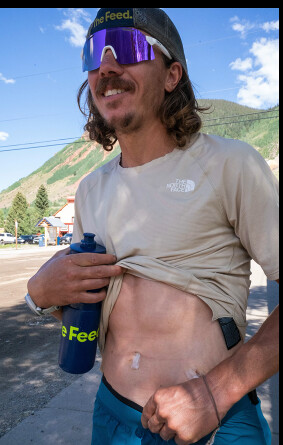
Miller’s appendix didn’t burst, but doctors removed it because they believed it was imminent. But soon after the procedure, he said he started thinking about the chance to be on the Hardrock starting line. He said he was walking around the hospital later in the evening after the procedure, and the next day, after he was released from the hospital, he walked about 3 miles in Durango. The following day, he rode his gravel bike in Silverton without any pain, and the the day after that—three days after the surgery—he was back running the trails around Silverton with mild post-surgical discomfort.
By Wednesday of this week, after running 8 miles and 6 miles on back-to-back days, Miller said he had hoped to start the 100.5-mile event and received verbal consent from his doctor. By Thursday morning, that consent came in written form, which he then submitted to Hardrock officials.
Miller said he had consulted with his doctor, his girlfriend, Jess, and several other people close to him and decided he wanted to continue with his intent to run. He said he didn’t feel any pain running this week, only some slight discomfort from the suture closures at the three point-of-entry holes in his abdomen that provided access for the laparoscopic procedure.
However, the Hardrock board of directors met with its medical advisors on Thursday and decided Miller would be ineligible to start the event. (Hardrock officials did not respond to RUN’s request for an interview or statement about the situation.)
“The recovery’s been really smooth, every day’s been better,” Miller said Thursday afternoon. “I ran the past four days and biked the other, and I felt surprisingly good. Honestly, I felt like I could go out there and give it a good hard go. Would I have? I don’t know, but I felt like there was a shot.”Miller said he understands the liability and safety concerns—both for his health and for the heightened potential of on-course evacuation if a problem did arise—and respects Hardrock’s decision.
“I think if they gave me the green light, it was pretty much decided I was going to go for it,” said Miller, who finished second at the Ultra-Trail du Mont-Blanc in Chamonix, France, last summer. “But we didn’t get it, and that’s just the way it is, so I’ll just move on from here. There’s definitely some disappointment, but it was a difficult and unexpected situation, and nobody wanted to be in that situation and making those decisions. As much as it hurts, it’s understandable, and it’s the responsible thing to do.”
In the months leading up to Hardrock, Miller had been running 140-150 miles per week between 40,000 and 56,000 vertical feet of gain training in Bend, Oregon, Manitou Springs, Colorado, and eventually Silverton. He said he hopes to maintain his fitness and then pivot to another event or a potential fastest known time attempt in the near future, but said on Thursday he hadn’t yet thought about that in detail.
On Thursday evening, after learning he wasn’t going to be able to run, he went on a two-hour run near Silverton that covered 12 miles with 1,200 feet of vertical gain.
“There are still some good races left for the year and there’s always plenty of projects and FKTs to consider so the fitness I’ve enjoyed from the training doesn’t have to be wasted,” he says. “It’s still there and I can hopefully go use it somewhere else.”
Login to leave a comment
Should you use a hydration vest during your marathon?
Hydration vests are becoming increasingly popular for road marathoners. Should you get one?
Do you need a hydration vest for racing a marathon? What about a half-marathon? Traditionally associated with trail running and ultrarunning, hydration vests are becoming more and more popular on the roads. But why do people wear them? And how useful are they for a marathon or half-marathon?
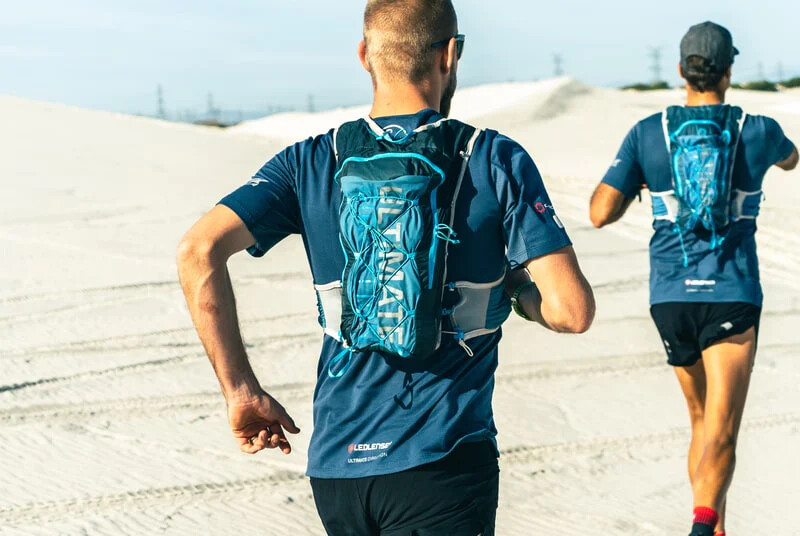
The case for the vest
The main reason people wear hydration vests is to ensure they have easy access to water during their runs. Hydration is important during long runs or races, particularly in hot weather, and carrying water bottles can be cumbersome and inefficient. A hydration vest provides a convenient and hands-free way to carry enough water or sports drinks to stay hydrated for a few hours. (Most come with either two 500 ml soft bottles that fit into pockets on the front of the vest, which you can drink from without removing them, or a larger hydration reservoir or “bladder” that fits in the back of the vest and from which you drink via a hose with a bite valve–or both. Popular brands like Salomon, Osprey, The North Face, and Nathan offer both.)
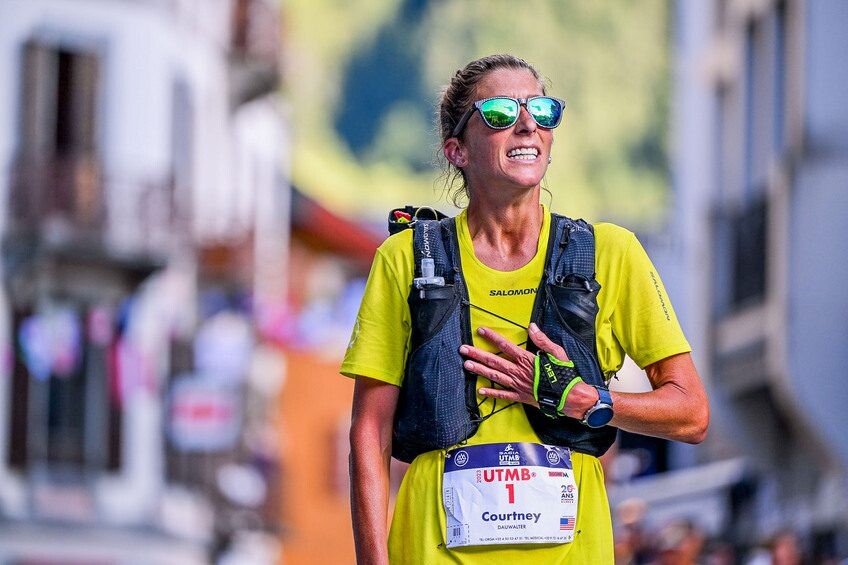
Many runners opt to fill one bottle with water and the other with electrolytes.
While most races provide water stations, they can be crowded, and they may not appear as frequently as you would like, so you may have trouble getting as much hydration as you need.
Generally speaking, unless it is extremely hot and you’re racing on trails, you’re unlikely to need the volume of hydration provided by a vest for a half-marathon.
The case against the vest
Some runners love hydration vests for the convenience and peace of mind they provide, but some find them uncomfortable. They may also make you even hotter on an already hot day, since they basically constitute an extra layer of clothing. The advantage is, they can usually hold significantly more fluids than a water belt (not to mention your other essentials, extra clothing, etc.); however, water is heavy, so you may prefer to opt for some combination of carrying your own water and relying on what’s provided on course.
During long training runs, you can plan your route based on the location of water fountains. Some runners even drive or bike their route ahead of time to stash water bottles along the way. Another option is to plan your route so you start from your doorstep and run the same smaller loop multiple times, allowing you to stop and hydrate at home after each lap.
It’s also important to make sure you’re adequately hydrated before a hot run or race.
As with any other piece of gear, if you do decide to invest in a vest for your marathon, be sure to try it out on your long runs a few times before your big day.
by Brittany Hambleton
Login to leave a comment
America’s Oldest Continuously-Held Ultramarathon Is Only Looking Forward
After 60 years, the JFK 50 Mile Race is sticking to its community-centered approach, and people keep showing up
Mike Spinnler cries nearly every time he recounts memories as a runner and long-time race director of the JFK 50, the oldest continuously run ultra in the country.
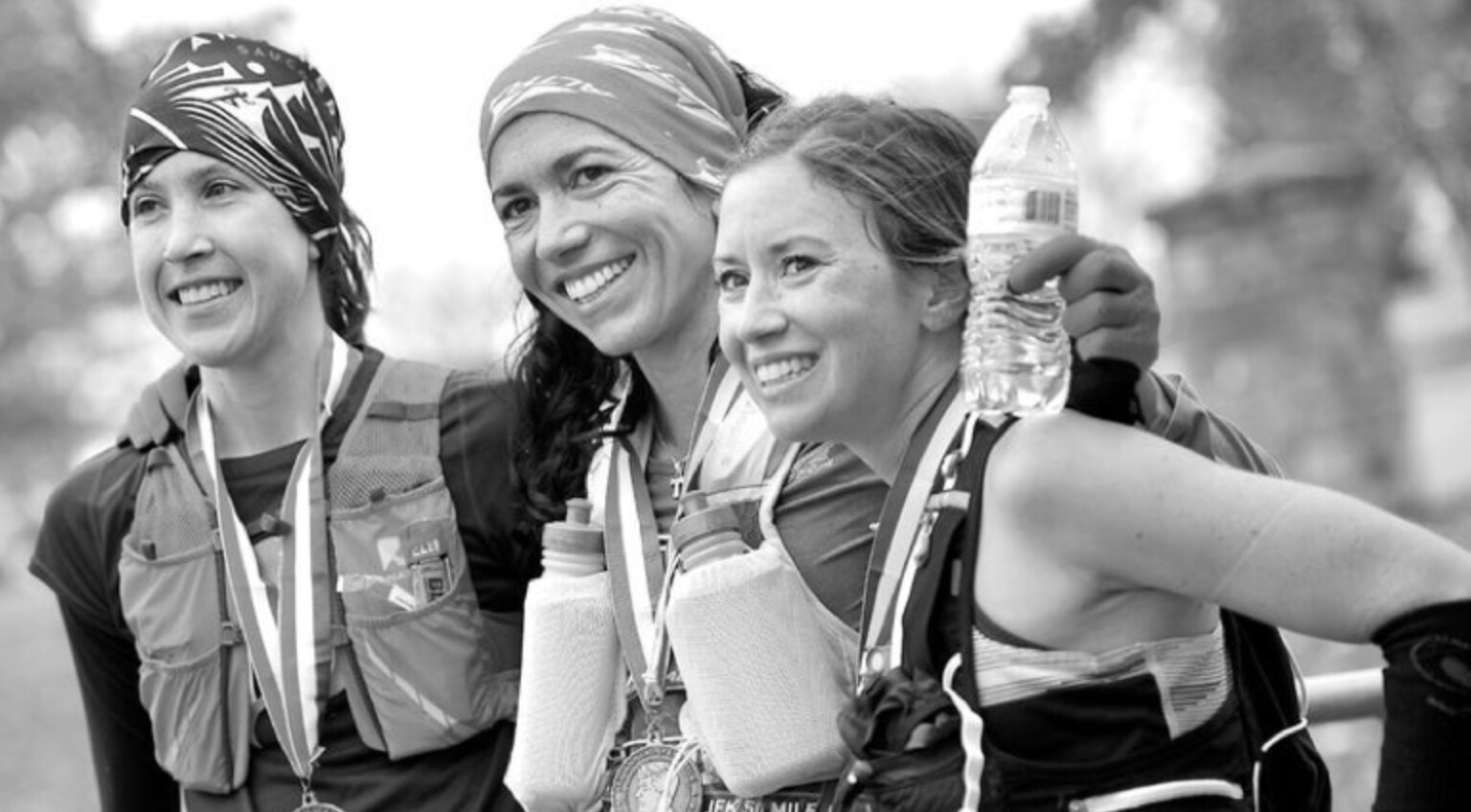
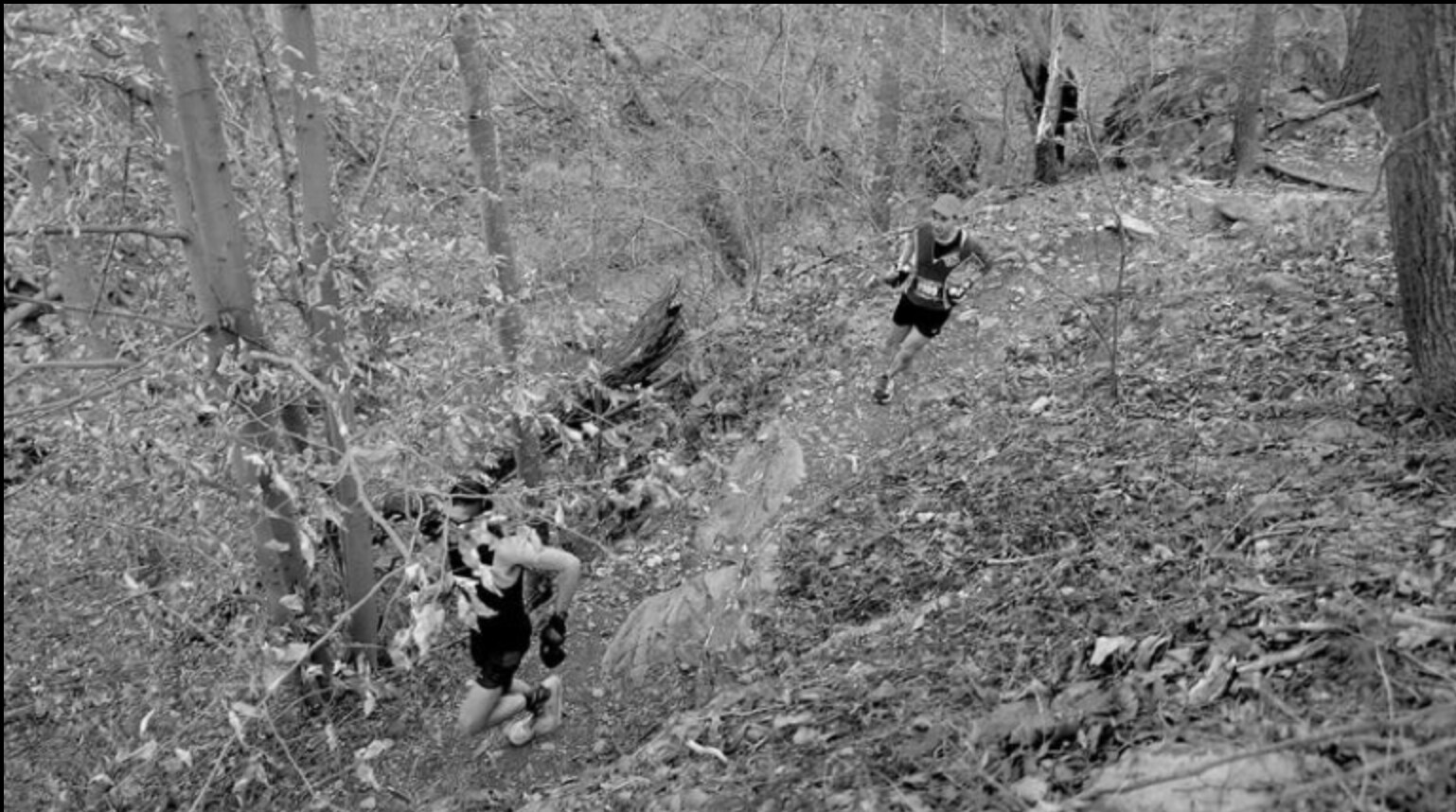
Such memories include the time he first ran the iconic Maryland race when he was 12 years old, or the year he cheered on his 60-year-old wife as she crossed the finish, or memories of watching his two sons racing. For him, this race is a member of the family.
In 1993, five years after his tenth JFK finish, Spinnler became the race’s second race director, where he’s been ever since. By then, he’d set the course record (5:53:05) in 1982, and added another win in 1983, for a total of five top-five and six top-ten finishes.
Thirty years later, it’s still his pride and joy. He’ll immerse in the magic of the event again on Saturday, November 18, as more than 1,000 runners take the journey through the historic route that’s so dear to his heart.
“It just keeps growing in its prestige,” he says.
The JFK 50 started in 1963, the same year President John F. Kennedy was assassinated. The president had instituted a public health program to improve the nation’s fitness, supporting the launch of a series of 50-mile races around the country. But as years went on, the only one that stuck around was the JFK 50.
“Kennedy’s mission was this: Improve your physical fitness, improve your lifestyle, improve your country,” says Spinnler. “We heeded his call and have been doing it for 60-plus years.”
The JFK 50 course is located about an hour northwest of Washington D.C., covering traditional lands of the Indigenous Massawomek and Shawandassee Tule (Shawanaki/Shawnee). One of the race’s primary appeals is that it’s a horseshoe-shaped, point-to-point course with three distinct sections: The Appalachian Trail (miles 0-15), the Canal/Tow Path (miles 15-42), and the rolling finish (miles 42-50).
The race starts in Boonsboro, Maryland, follows a few miles of paved roads before connecting with the Appalachian Trail (AT), where the course climbs more than 1,000 vertical feet in five miles, crests to the high point, and follows rocky singletrack before dropping 1,000 vertical feet halfway into the race (mile 14.5), to connect with a flat marathon distance along the C&O Canal Tow Path. The last several miles are rolling country roads, where it finishes at Springfield Middle School in Williamsport.
In 2019, Seth Ruhling, an unsponsored athlete, showed up to the JFK 50, slept in his car the night before, and won the race in a blistering 5:38:11, his debut 50-miler. Within hours of winning, he sealed a sponsorship with The North Face.
Ruhling, 29, now lives and trains in Boulder, Colorado, and he’ll be returning for his second JFK 50. Since Ruhling’s 2019 win, he has made a name for himself with a sixth place finish at the Pikes Peak Marathon in 2021, second place at Montana’s Rut 50K, first place at the Broken Arrow Skyrace 46K, and most recently, sixth at CCC 100K during the week of UTMB in Chamonix, France.
In 2020, JFK 50 was one of the only races in the country that didn’t shut down with the pandemic. Ruhling had planned on racing, but got injured. “I always wanted to go back,” he says.
Ruhling was particularly drawn into this year’s race because of its deep field of registered elites, which had at one point included 2023 Western States winner Tom Evans, Matt Daniels, Adam Merry, and Sean Van Horn—all of whom have since dropped.
His strategy for the mixed course, which requires technical trail chops as well as fast road turnover, is to attack every single section. He says that, while the JFK 50 is known more as a “track race,” it’s a mistake to discount the early trail miles. “The record is going to happen on the towpath, sure, but only if it’s set up with efficient running on the AT section,” he says.
by Outside Online
Login to leave a comment
More Prize Money Is Flowing Into Trail Running. What Does That Mean for the Sport?
Annie Hughes, one of the top trail runners in the U.S. for the past two years, had another amazing season running ultra-distance races in 2022. On September 17, the 24-year-old Hoka-sponsored runner and part-time college student won the Run Rabbit Run 100 in Steamboat Springs, Colorado, her fourth win of 100 miles or longer since April. Earlier this year, she won the Coldwater Rumble 100 in January, Cocodona 250 in April and the High Lonesome 100 in July.
Those were all exceptional efforts in really challenging races, but the big difference she experienced after crossing the Run Rabbit Run finish line, 21 hours and 26 minutes later, was that she won $17,500. (And yes, she was handed one of those cartoonish, oversized checks at the awards ceremony.)
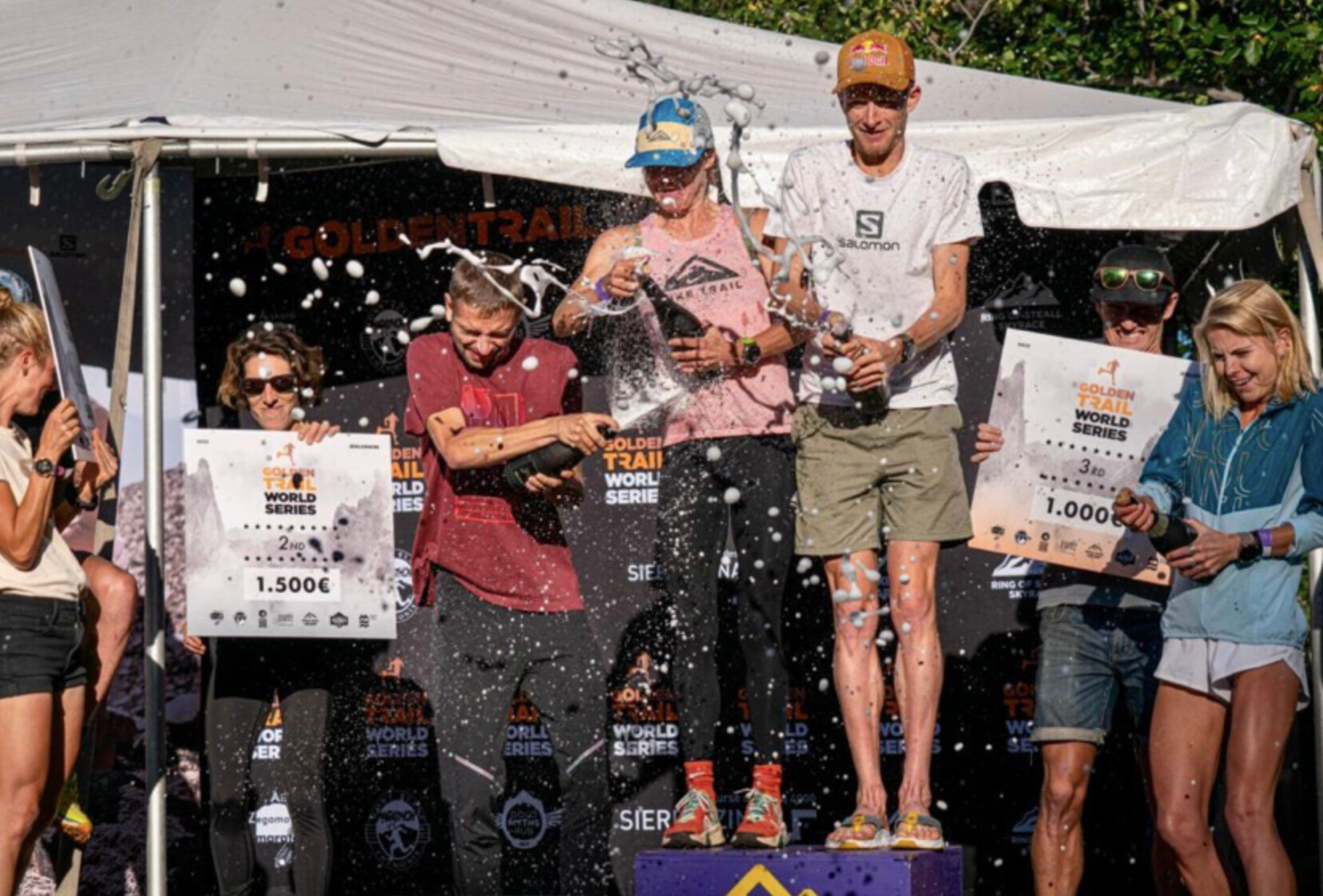
Run Rabbit Run is one of the rare American trail races that offers a relatively large prize purse, and for a decade, it's been the largest in the sport. Hughes earned $15,000 for winning the women's race and split another $5,000 with Arizona trail runner Peter Mortimer (who placed 12th overall) as part of the event's new team competition.
"That wasn't the reason I was drawn to the race, but it was definitely pretty cool to win that much money," Hughes said. "I'm glad I did it, because it wound up being a really great race with an amazing course on a beautiful day."
The origins of trail running were always more about the joy and freedom of ambling through the natural world, and less about the specific time and pace of any run or race, which is why winning big cash prizes is mostly uncommon in the sport, even for top-tier runners like Hughes. Over the past two years, Hughes has won 10 races of 50 miles or longer, yet her Run Rabbit Run victory was the first time she's ever earned money for her efforts.
More sponsorship money and bigger cash prizes are flowing into the sport, helping the top athletes earn a full-time living in the sport and become global stars. But that evolution has also created a desperate need for a unified governing body and more consistent drug-testing as doping becomes a more acute concern.
A Windfall of Prize Money
Historically, America's biggest and most notable trail running races haven't offered any prize money at all-Western States 100, Hardrock 100, Dipsea Trail Race, Leadville 100, Mount Marathon Race, Seven Sisters, Black Mountain Marathon/Mount Mitchell Challenge-partially because races simply couldn't afford to pay it, and also because, at the soul of the sport, that's not what the races were historically about or why most top runners were competing.
But with the continued growth of the sport-trail running has grown by 231 percent over the past 10 years, according to one report-and the dawn of a new level of professionalization over the past decade, there is a lot more money being injected into the sport. That includes more high-profile events and race series, more brands investing in the sport, more sponsored runners and trail running teams, as well as a growing expectation that prize money should be part of the equation as it is in road running, triathlon, and even obstacle course racing.
For many years, The North Face 50 near San Francisco was one of the only ultra trail races in the world to offer a significant prize purse. From its inception in 2006, until it disappeared after 2019, that race famously awarded $30,000 in prize money, which included $10,000 to the top finishers in the men's and women's races, plus $4,000 for second and $1,000 for third. It was a race to look forward to at the end of the calendar year, both for the cash awards and the prize-induced competition that drew top runners from around the world.
During that span, Run Rabbit Run, though a lower-profile race, quietly began dishing out some of the biggest payouts in the sport, in part because race organizers Fred Abramowitz and Paul Sachs believe in rewarding its top athletes for their efforts (as well as giving back to the community via even bigger charitable contributions). The race winnings come primarily from entry fees of the 600-runner event and sponsors, if and when the race has them. That wasn't possible back in the early days of the sport, when entry fees were minuscule and cash sponsors were mostly non-existent, but things have started to change.
Abramowitz and Sachs, who both earn their living as attorneys, are unique in that they want to give back to the elite athletes and the Steamboat Springs community, but they also want to help grow the sport. Abramowitz outlined what he calls "A Blueprint for Sponsors of Ultra Running," a three-page document that explains how and why trail ultrarunning-both as a sport and as individual races-can connect to more casual runners, sports fans, and the general public.
He points to the rampant growth of NASCAR, Professional Bull Riding, and professional poker over the past 20 years from their roots as fringe sports, relatively speaking, to mainstream spectacles with massive fan bases, TV contracts, and social media followings. Trail and ultrarunning aren't there yet, Abramowitz has noted, but they've certainly been growing rapidly.
"Today millions watch those events, though the actual number of participants is minuscule," Abramowitz wrote in his missive. "Ultrarunning can learn from these events: it needs new ideas, new ways of attracting the already committed runners and the casual sports fan to our terrific sport. Fields need to be competitive and races [need to be] dramatic; there are hundreds of 100-mile races, but those that offer competitive fields are a handful at most. Most ultra-races offer spectacular scenery in interesting venues."
Abramowitz said sponsors should support races such as Run Rabbit Run that offer prize money not merely because it's good for sport, but also because prize money can attract competitive fields, and competitive fields attract interest-from spectators, participants, potential sponsors, and the general public. He also points out that having prize money at more domestic races is a way to keep the sport from becoming entirely Euro-centric, which has been an increasing trend in the past several years.
The trend of cash purses seems to be increasing, and on the face of it, that's good for elite athletes capable of podium finishes. But it's a complex topic and one that certainly will simultaneously increase the competitiveness of the sport while, some argue, continue to pull the sport away from its organic, racing-in-nature roots that was mostly viewed as the antithesis of competitive road racing.
On the same day Run Rabbit Run paid out $75,000 in total prize money, the Pikes Peak Ascent awarded $18,000 in prize money for its top 10 finishers-including $3,000 apiece to the men's and women's winners-while the Pikes Peak Marathon, on September 18, had an additional $10,500 in total prize money for the top five runners. The races also offered $2,000 (Ascent) and $4,000 (Marathon), respectively, as course-record bonuses, and a $10,000 premium to any runner surpassing a pie-in-the-sky time well ahead of the course records. None of those records were broken, but the $28,500 in total prize money-partially backed by the Salomon-sponsored Golden Trail Series-was one of several large prize purses offered at U.S. races this year.
Other big American prize purses were also primarily tied to the Golden Trail Series events-the $50,000 spread over four races at the mid-June Broken Arrow Sky Races in Olympic Valley, California, and the September 25 Flagstaff Sky Peaks 26K race in Flagstaff, Arizona, where runners competed for $18,000 in prize money and a chance to compete at the Golden Trails World Series Final, and the $15,000 winner's earnings at the Madeira Ocean & Trails 5-Day Stage Race in October.
Also of note, the November 18-20 Golden Gate Trail Classic paid out $25,000 in total prize money to the top five finishers in both the 100K and half-marathon races, which were part of this year's nine-race $270,000 Spartan Trail World Championship Series.
Meanwhile, the Cirque Series, sponsored by On, paid out $3,600 in total prize money at each of its six sub-ultra mountain running races in the U.S., including $1,000 for the men's and women's winners. The Mt. Baldy Run-to-the-Top on September 5 in Southern California offered $3,000 to runners who broke the event's longstanding course records, and Joe Gray and Kim Dobson obliged by taking down each mark.
Most U.S. Trail and Mountain Running Championships have a minimum of $2,000 in prize money. Typically that comes from regional sponsors eager to support the local race organizations, such as the case with Northeast Delta Dental's contributions behind this year's Loon Mountain Race in Lincoln, New Hampshire, which hosted the U.S. Mountain Running Championships. That event had a $1,500 total prize purse that was paid out to the top three men and women in each race, but it also had an additional $1,500 for an Upper Walking Boss premium that was spread among the top three fastest times in each gender on the super-steep upper part of the course.
Meanwhile, the 2022 World Mountain and Trail Running Championships in Thailand paid out $66,000 to the top five finishers over four races, including $4,000 to the winners of each event.
"(The prize money) is way better than it's ever been, both for the athletes earning it and the number of sponsors who are contributing to it," says Nancy Hobbs, executive director of the American Trail Running Association and the chairperson of the USATF Mountain Ultra Trail Council that oversees national championship races and the U.S. Mountain Running Team.
From a longer view over the past decade or so, Joe Gray agrees there is more money coming into the sport than ever before. As a top-tier pro since 2008 and 21-time U.S. champion, he's regularly won more prize money at high-level races in Europe for more than a decade. But more than the growth of prize money, he has seen more brands interested in putting money behind athletes, races, and the sport in general.
"I think there has always been prize money there, and if you're successful you could make a lot more money really quickly," said Gray, a two-time World Mountain Running Champion. "I do think there is more money coming from the sponsors paying out better contracts and bigger bonuses, which I think will wind up being more beneficial to athletes overall."
Most elite trail runners get annual stipends from their sponsoring brands and bonus money for top performances. Gray is backed by Hoka, but he also has sponsorship deals with Fox River Socks, Kriva, Never Second, Knockdown, Tanri, Momentous, Casio, and GoSleeves. In addition to Hoka, Annie Hughes gets additional support from Ultraspire, Coros, and Tailwind Nutrition. But the life of professional trail runners-independent contractors who don't get healthcare and retirement program benefits-can get expensive with the growing cost of travel, regular bodywork/physio treatments, and private health insurance.
The sport's top-tier elite athletes-Joe Gray, Kilian Jornet, Courtney Dauwalter, Jim Walmsley, Maude Mathys, and Scott Jurek, among others-make a good living from their sponsorships. But there are really only a handful American trail runners making more than about $50,000 a year from shoe brand sponsorships. (Most "sponsored" trail runners are making somewhere between $10,000 to $30,000 per year.) The bottom line is that winning prize money, for those who are fast enough to consistently finish on the podium in big races, certainly helps make ends meet and is necessary to keep the sport's top athletes from having to work other jobs so they can focus entirely on training, recovery, and racing.
"This [2022] is the first year I've gone all-in on trail running," said Hughes, who worked as a waitress in Leadville the previous two years. "I'm able to live off what I make, but I'm not really saving anything. So it was really nice to win that money because then I can put some away in savings."
Higher European Standards
So far, Abramowitz appears to be right about the sport shifting to more of a European focus, and it's, at least in part, tied to the increased prize money that has attracted competitive athletes. While many top-tier European events have paid out modest prize purses for years, some of those races have also helped out visiting runners by way of travel stipends, hotel accommodations, or appearance fees. That's partially because European races are generally larger (500 to 1,000 participants or more) than U.S. races (typically fewer than 500 participants).
Unlike Hughes, who only raced in the U.S. this year, American runner Abby Hall, who runs for the Adidas-Terrex team, raced three times in Europe and earned prize money each time. She placed second in the Transgrancanaria 126K in the Canary Islands in March (which doubled as the Spartan Trail World Championship), finished third in the CCC 100K in Chamonix in August, and won the Transvulcania by UTMB 72K back in the Canary Islands in October.
Like Hughes, Hall receives an annual stipend and race bonuses from her sponsor, but admits it's been nice to have more opportunities to win money-both because it helps her make a living wage and because it's consistent with other professional endurance sports.
"In the past, it hadn't even been a consideration before, for how income would work out as an athlete," Hall said. "But this year it actually added up to be a decent amount. I'm grateful for the opportunities."
In 2022, American runner Hayden Hawks won an off-the-radar 100K a race in Krynica, Poland, and brought home the 100,000 zloty winner's prize ($26,000), one of the bigger individual purses ever awarded in trail running. In 2017, when Hawks won the CCC race, he didn't win anything because UTMB had refused until 2018 to offer prize money at its races, partly because race founders Catherine and Michel Poletti have believed that increased prize money will bring more incentive for some athletes to consider doping or that agents would take too big of a cut.
UTMB finally began offering prize money to podium finishers in 2018 with a total purse of about $34,000 (35,000) and continued that through 2021. But after forging a business relationship with Ironman and launching the new UTMB World Series, it has increased the prize money awarded in Chamonix. In 2022, UTMB said it paid out about $162,000 in total prize money (the approximate equivalent of its stated 156,000 prize purse) to the top 10 men and women finishers of the UTMB, CCC, and OCC races.
That includes $10,400 to the winners of each of those races, with approximately $5,200 going to second-place finishers and $3,125 for third. Fourth- and fifth-place finishers in each of those races earned about $1,500, while 6th through 10th took home $1,000.
While those more notable ultrarunning paydays can be big windfalls for a trail runner, they still pale in comparison to what elite-level road marathoners and triathletes earn at the biggest races that have a much larger audience, including live TV coverage. For example, the 2022 Boston Marathon awarded $876,500 in prize money and $150,000 to the winners, while New York City Marathon paid out $530,000 in total prize money at its November 6 race, including $100,000 to the men's and women's winners. The 2021 Ironman World Championships in St. George, Utah, had a $750,000 prize purse, including $125,000 to the winners, similar to what was awarded at the 2022 Ironman World Championships October 6-8 in Hawaii.
While only a few top trail runners could have opted to pursue a marathon or triathlon career instead of trail running, what's more relevant is the spike of growth trail running. Although it is not yet internationally televised as major marathons and triathlons are, the surge in participation and livestream viewing options is starting to bring in more media attention and sponsorship money than ever before. And more media attention begets more participation and professionalization.
"I think we'll definitely see ultra-trail running continue to grow for years to come," says Mike McManus, director of global sports marketing for Hoka. "I think it's at a point where it's just on the cusp of the real growth that's coming and all that will come with it, similar to where the marathon was in the 1980s and triathlon in the 1990s. It might never be as big as marathoning, but trail running will definitely get more built out as it continues to grow."
"It's nice to make some money for the sport we do. This is my job, and being able to support my family with a decent chunk of money is pretty nice," Hawks says. "I definitely don't go after races just for money, but if there is a gap in my schedule where I can win a little bit of money, I am definitely going to take advantage of that for sure. I want to continue to be in this sport and live this lifestyle as long as I can, so knowing that there are sponsors and races investing more in runners is something I am really grateful for."
The Ongoing Dilemma
While Abramowitz and Sachs have been eager to give out prize money at Run Rabbit Run, not all races are equipped to do so. Many U.S. races are garage-shop operations that barely break even, while some are just too small to make it happen. The Western States 100-Mile Endurance Run (WSER) is operated by a non-profit organization, and offering prize money goes against the mission of the race, says race director Craig Thornley.
The biggest concern that race directors have, including Thornley, is that prize money attracts athletes willing to use performance-enhancing drugs because the sport lacks a comprehensive anti-doping strategy that includes both post-race testing and out-of-competition testing.
"In general, I think the prize money is probably a good thing because professional athletes are able to make a living," Thornley said. "But I think, as a sport, we'll probably have to be more aware of people trying to use drugs or some other ways to get that prize money."
A few years ago, the Western States 100 famously announced its zero-tolerance policy regarding the use of performance-enhancing drugs (PEDs) that prohibits any athlete who has been determined to have violated anti-doping rules or policies-by World Athletics, World Anti-Doping Agency (WADA), U.S. Anti-Doping Agency (USADA), or any national sports federation-is ineligible for entry into the WSER. Although Western States has regularly drug-tested its top finishers, only a few other big trail or ultra-distance races test its finishers with a WADA-sanctioned program.
Thornley believes the incentive to cheat has probably increased as more brands have stepped up to sponsor athletes, but the increase in prize money probably makes it more tangible.
He's not the only one. Ultrarunning coach and podcaster Jason Koop, an outspoken proponent for authentic drug-testing in the sport, agrees, saying that it's time for the sport to collectively start developing mandatory drug-testing protocols, even on a small scale. While he doesn't believe doping is prevalent in trail running, he believes it's definitely already an issue.
"People would be fooling themselves if they thought that every trail running performance was clean. If you think that that's the case, then I have a bridge to sell you," Koop says. "Prize money or no prize money, I think the bigger thing is that the ecosystem is developed enough and there is enough financial reward at stake to where everyone kind of owes it to everybody else to get something done."
In other words, it's time for the sport to take some next steps-either by big governing bodies or small factions of people interested in the long-term health of the sport-to develop more structure and universal anti-doping policies.
by Trail Runner Magazine
Login to leave a comment
Want to Become a Professional Trail Runner? This New Program Might Be Your Chance.
Two weeks ago, The North Face announced the launch of its Athlete Development Program, an initiative to diversify the trail and mountain running community, and outdoor sports more broadly.
The program will provide two-year contracts with The North Face to 15-20 climbers, alpinists, skiers, snowboarders, and trail runners, providing expedition funding, apparel, equipment, education about the roles of a professional athlete (i.e. pitching expedition ideas for funding and engaging with one's community), and one-on-one mentorship with established athletes for the duration of the contract. The program will begin with a three-month onboarding phase, followed by nine months of mentorship with a current North Face athlete, educational sessions, and the potential for additional collaboration opportunities.
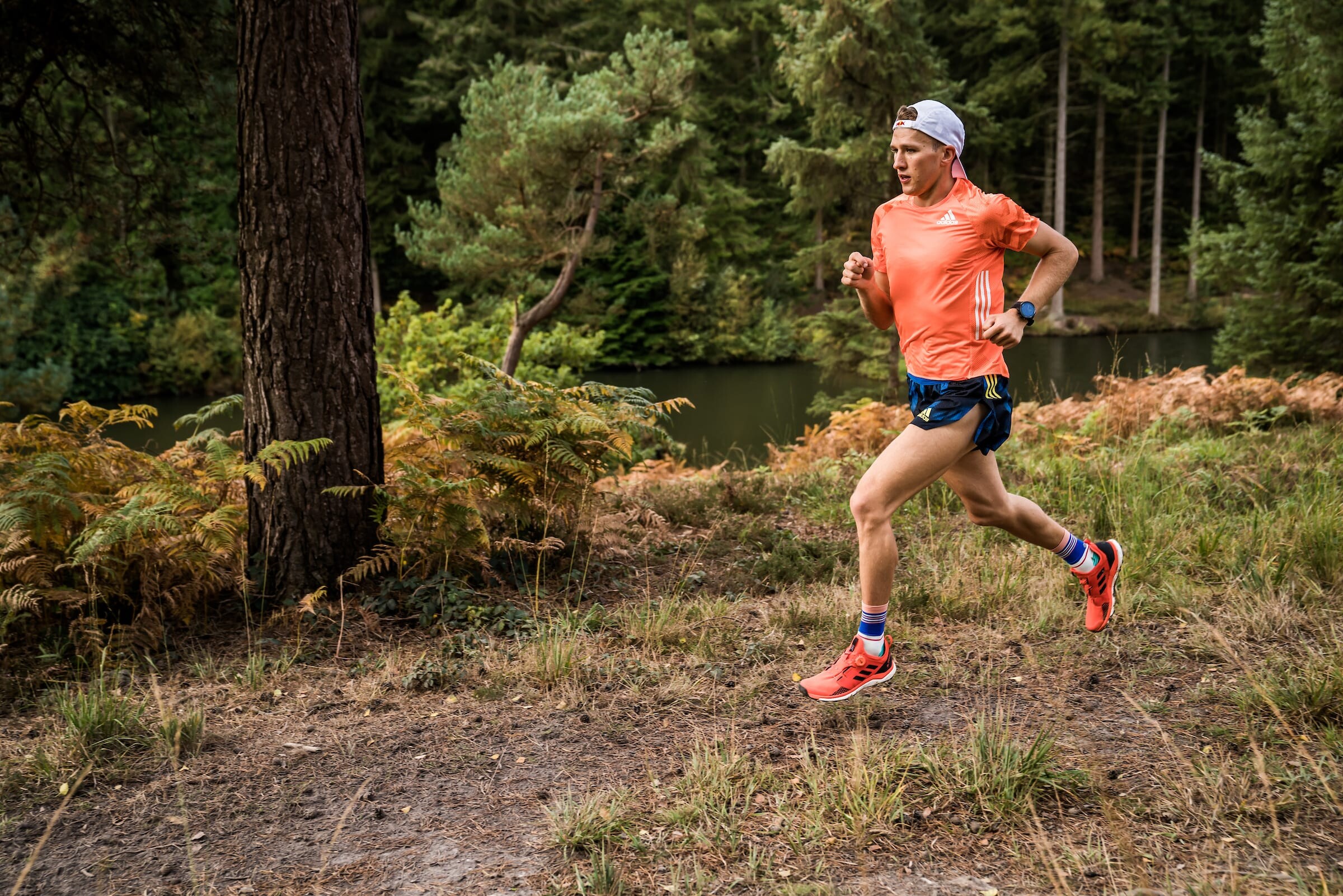
"Today's athlete recruitment process relies heavily on referrals, historically favoring those who are already well-connected and enjoy the privileges that allow them the time and resources to accelerate in their sport," one North Face spokesperson said.
Mike Foote, a long-time professional ultrarunning athlete for The North Face, responded directly to the historical challenges of access within the sport.
"I joined the team because I had good results, but also because Mike Wolfe, who was on the team at the time, lobbied hard for me to get picked up," said Foote. "I'm not sure it would have happened without that relationship."Foote has known about plans for the Athletic Development Program for months now and is excited to see it formally launched. "The whole point of it is to democratize the process of getting access," Foote said. "The Athlete Development Program removes the hurdle of social networking and gives folks a direct path to the brand."
The Athlete Development Program strives to remove these social barriers by introducing an online application portal-eliminating the need for existing networks. The North Face says it will prioritize athletes from "historically excluded or marginalized" groups to create a more inclusive outdoor community.
Applicants must be 16 years of age or older and based in the United States to apply. The application period will remain open until May 19, 2022, and the athletes will be selected in September 2022.
by Trail Runner Magazine
Login to leave a comment
One of the largest mountain marathons in the world celebrated its comeback
After the cancellation last year, several thousand runners were again at the start of the Jungfrau Marathon in Switzerland.
The route was adapted for this year by the organizer: Of course, nothing has changed in the fantastic panorama. The course led from Interlaken Airport to the Eiger Glacier. The runners passed Böningen, Iseltwald, Wilderwil, Zweilütschingen and Lauterbrunnen, among others. The eponymous four-thousander "Jungfrau" was, just like the mighty Eiger north face, in the immediate vicinity and in the field of vision of the athletes.
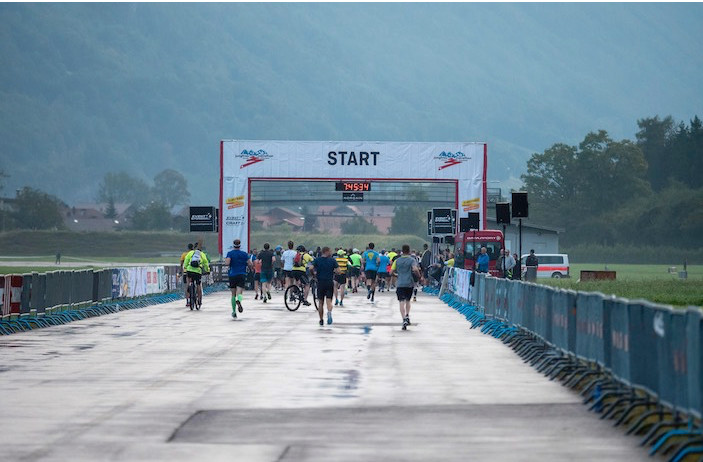
Fight for the 3-hour mark and victory
For the 42.195 kilometer marathon route with around 2,000 meters of altitude, top times of around three hours were to be expected. The winner of the last edition two years ago was the Briton Robbie Simpson, who at the time cracked the 3-hour mark in wintry conditions with 2:59:30 hours. For women, Simone Troxler is the defending champion from 2019.
Colombians triumph
The Colombian Jose David Cardona was in a class of his own that day. He was able to break away from the last pursuers after less than half of the race and clinched an undisputed victory with 3:05:01 hours. More than five minutes behind followed Stephan Wenk after a great race to catch up.
Laura Hottenrott lived up to her role as a favorite for women. The German professional runner was over 13 minutes ahead of Georgina Schwiening after 3:27:30 hours.
Login to leave a comment
Jungfrau Marathon
The Jungfrau-Marathon presents the most beautiful marathon course in the world - marvelous mountains scenery and the excellent change of the landscape between the start in Interlaken and the finish on Kleine Scheidegg. The difference in altitude of 1829 meter (6000 feet) is a challenge for everybody. There is no Marathon in Europe with such great dimensions. Eiger, Mönch and...
more...Here's What To Know About Recycling Your Running Shoes
It probably won't surprise you, a runner, a definite wearer of shoes, to learn that the shoe industry is massive (producing 24.2 billion pairs a year, massive). Also unsurprising is that with its size comes a monster amount of waste as consumers continue to buy and ditch pair after pair.
The life cycle (from material processing, manufacturing, logistics, and eventual waste) is estimated to create 30 pounds of carbon emissions for each pair of running shoes.
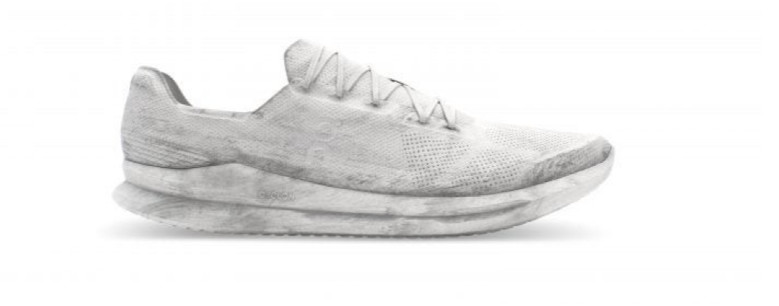
Running brands aren't oblivious to the problem and seem to grasp that runners are caring more and more about the environment, but aren't willing to compromise on the quality of their footwear. In fact, that's where a lot of the dissonance comes into play. To truly reduce the carbon footprint of the sneaker industry, runners need to one day rely on fewer, yet more durable shoes.
But no shoe brand wants us to buy fewer shoes. Which means, it's up to them to find another way. And this April, just in time for Earth Day, many brands are launching new (or beefing up old) footwear recycling.
Currently, 85 percent of textiles are not recycled, with the average person throwing away 70 pounds of clothing and other textiles annually.
In general, recycling shoes is a complex process and depending on the materials in the shoe it might not be possible. "Footwear is difficult to recycle because most shoes are made using multiple, mixed materials which are often stitched or glued together," says Shaye DiPasquale a publicist for the recycler TerraCycle.
"There is not a lot of physical recycling of footwear that goes on," says Eric Stubin, president of Trans-Americas Textile Recycling. The majority of 'recycled' shoes and clothes are shipped places to be reused. Stubin's company processes about 10 million pounds of post-consumer textile waste from clothing, shoes, and accessories every year.
Take polyurethane foam, a material researchers from Northwestern University only recently figured out how to upcycle. "Polyurethane foam waste has historically been landfilled and burned or down-cycled for use in carpeting," said William Dichtel, who co-led the research. "Our latest work effectively removes air from polyurethane foams and remolds them into any shape. This could pave the way for industry to begin recycling polyurethane foam waste for many relevant applications." Polyurethane, which is sometimes used in the midsole of shoes does not melt even in extreme heat. Previously, it could only be shredded or compressed in ways that make the material not durable enough for other uses.
In general, when clothing is recycled it tends to go to one of these four different end destinations:
Reused and repurposed as secondhand clothing (45%)
Recycled and converted into items like reclaimed wiping rags for industrial and residential use (30%)
Recycled into post-consumer fiber for home insulation, carpet padding, and raw material for the automotive industry (20%)
Landfills (5%)
Perhaps the most notable and lauded shoe recycling program is Nike's Reuse-A-Shoe, which is available at select Nike stores. Through the program any brand of athletic shoe is collected to be turned into a Nike Grind product-tracks, courts, walkways, and playground floors made from ground sneakers. Stubin considers the Nike Grind program to be the most "robust and viable program for footwear."
Earlier this month, the sandal company Teva announced its partnership with TerraCycle through a program it's calling TevaForever. For no additional cost, customers who sign up receive a pre-paid shipping label to send their worn sandals to TerraCycle. Their goal is to also turn the used sandals into running tracks, playgrounds, and more.
TerraCycle's footwear Zero Waste Box is an option that anyone can order and fill with shoes to be recycled. According to DiPasquale the shoes will either be manually or mechanically separated into fabrics, metals, fibers, organics, and plastics. The fabrics are reused, upcycled, or recycled. The metals are smelted for reuse elsewhere. Wood or paper fibers are recycled or composted. And the plastics are melted down and turned into pellets, flakes, or other usable formats to be molded into new products or packaging.
But what if you could buy a shoe with a promise that it will be recycled, rather than looking for a solution on the back end? On, the Swiss shoe company has recently launched its Cyclon shoe subscription which promises to be a closed-loop system. For a fee of $29.99 per month you are delivered the shoes, made of castor beans. When the shoes reach the end of their life, you let On know and they will send you a new pair along with everything you need to ship the old pair back to be recycled into new products.
Because of the concept, On was awarded the 2021 ISPO Product of the Year as well as a Sustainability Achievement award.
And on Earth Day, Salomon will begin selling its Index.01 shoe in the U.S., which is already available in Europe. Like On's concept, it promises to be a circular life-cycle shoe. As long as consumers send it back, partners of Salomon will recycle the TPU and polyester into raw materials for use in other products. In Europe specifically, the TPU will be recycled into Salomon ski boots.
What about socks? An oft-forgotten item that is more than likely to end up in the landfill. Smartwool has just announced its new partnership with Material Return starting April 21. Like Nike Grind, this program involves collecting old socks (can be any brand or material, but must be clean) to be ground up and used in other products. This is your chance to get rid of those lonely single socks that, let's be honest, won't ever find their match. Find a donation center here.
4 Other Ways to Donate or Recycle Your Shoes
Donating your shoes so someone else can get use out of them is probably the best thing you can do with that old pair.
Stubin's biggest piece of advice when donating your shoes: Don't judge your shoes too harshly. "A good pair of shoes, even if a runner deems them no longer useful, can likely find a second life," he says.
Even if the charity you donate to can't re-sell the shoes to a consumer, they can still sell it to a recycler. "So if a Goodwill sells clothing to Trans-Americas, we pay them for that material. There's a market price for that material," says Stubin.
Programs like One World Running and Soles4Souls (a popular choice among running stores) collect and distribute shoes and other clothing to people who need them. To date the Soles4Souls program has found second use for over 56 million pairs of shoes. Find a donation center near you here.
Soles4Souls partners with a lot of other high profile donation programs. The North Face's Clothes the Loop program, for example, will send your shoes to that recycling leader.
[Editor's Note: You can also join our Soles4Souls shoe drive! Get all the details here and help us put your old sneakers to good use.]
Also announced this month, Nike will soon start accepting lightly worn, good condition shoes into its refurbished program for resale in 15 authorized stores. You can also check with your local running store to see if they offer any sort of similar takeback program.
Extending the life of a garment by one year can reduce its carbon footprint by 25 percent, according to the Thredup fashion footprint calculator. "So footwear that lives on and finds a second life for two to three years, conceivably reduces the carbon," says Stubin.
Recycling vs. trashing shoes is only a small fraction of the problem. Most of the carbon emissions related to running shoes happens in the manufacturing process. At the end of the day, the best thing that can be done is to buy less and make the products we do own last longer. But, as with every environmentally charged movement, we have to start somewhere and demand forward progress and innovation, while doing our part as individuals.
by Women’s Running Magazine
Login to leave a comment
Earth Day 2021: athletes and brands that are making a difference
The Kilian Jornet Foundation
Fans of the sport will know Spanish ultrarunning champion Kilian Jornet well, but they might not realize that he has his own foundation that is dedicated to climate action. The Kilian Jornet Foundation (KJF) works to protect the world’s mountains, which are near and dear to Jornet’s heart, because when he’s not running up a mountain, he’s probably climbing one. As temperatures rise globally, the snow, ice and glaciers found on the world’s mountains melt, leading to rising sea levels, which can cause even more problems, including increased rates of natural disasters, the destruction of unique ecosystems and more.
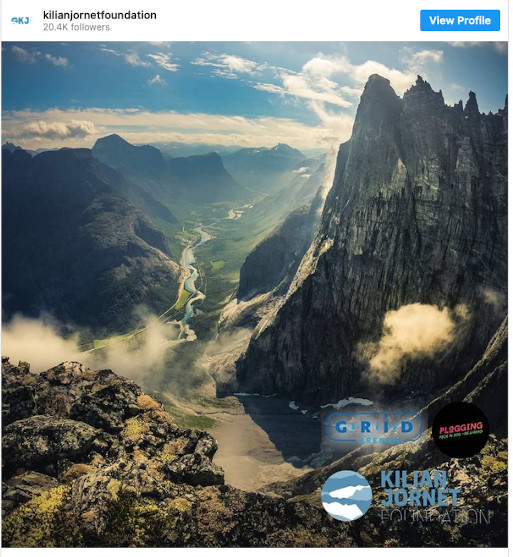
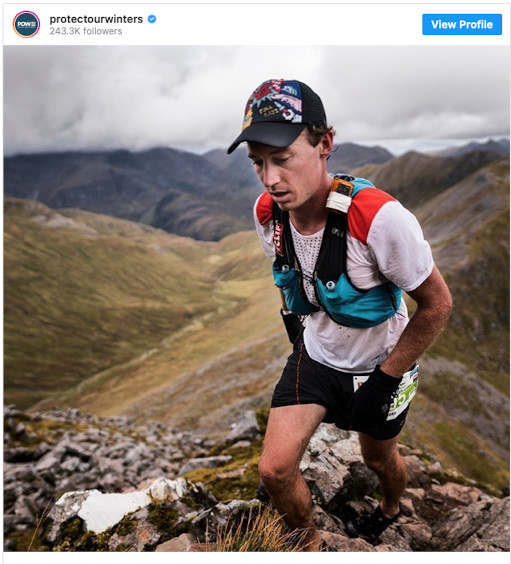
“Mountains play a key role in our global system,” the KJF site reads. “Without them and their environment there would be no life, and that is why it is essential to conserve and manage them sustainably.” The KJF is linked to other nonprofits that focus on mountains, nature and sustainability, and the site also lists how individuals around the world can play a role in protecting the environment.
Protect Our Winters
Protect Our Winters (POW) isn’t a running-specific nonprofit, but it does have the support of multiple runners and several running brands. As the organization’s name suggests, its goal is to save winter, which is becoming shorter and shorter around the world as global temperatures continue to rise. POW uses its network of outdoor athletes to fight for change, with the ultimate goal of playing a part in achieving carbon neutrality by the year 2050. A number of runners are part of the POW team, including Rickey Gates, who is well known for having run every street in San Francisco. To learn more about POW,
The North Face
The North Face also supports POW, but the company has climate initiatives of its own. A big project from the brand is its Exploration Without Compromise lineup of products. Clothing and gear with the Exploration Without Compromise badge is made from at least 75 per cent recycled, regenerative or responsibly sourced renewable materials. The company calls this “sustainably-conscious gear,” and there are plans to add to this product line with “circular systems” of recyclable gear that The North Face will develop itself. These products will be “designed for circularity,” and the company says they will hit stores in 2022. For more on The North Face and its commitments to sustainability,
The Ultra-Trail World Tour
The Ultra-Trail World Tour (UTWT) is responsible for some of the world’s biggest and most famous ultramarathons, but it is also the parent organization of a new initiative called Trail with Purpose. This was introduced this year, and it’s a UTWT effort to promote the preservation of the environment and climate action. “Run and challenge yourself, yes, but don’t forget to commit to a sustainable future,
Trail with purpose
View on the original site.
This initiative will be centred around three “forums” that will be held throughout 2021. These forums will feature climate experts who will speak to how race organizers and runners can “meet the challenges of tomorrow’s world” and play a role in the fight against climate change. The first forum will take place in May, and it will focus on business practices that are “compatible with the environment.” The next is in June, and it’s all about water management during running events. Finally, the third forum will be held in August, and it will look at how organizers can minimize the impact their events have on the environment. Click here to find out more about the Trail with Purpose initiative.
by Running Magazine
Login to leave a comment
The North Face Just Dropped the First Carbon-Plated Trail Running Shoe
Controversial speed is coming to a mountain near you
I’ve tested out carbon-plated shoes from a variety of running brands over the last 12 months. A movement that began with Nike’s NEXT% line — which propelled Kenyan legend Eliud Kipchoge to a mind-boggling sub-two hour marathon back in late 2019 — has now firmly taken over the sport.
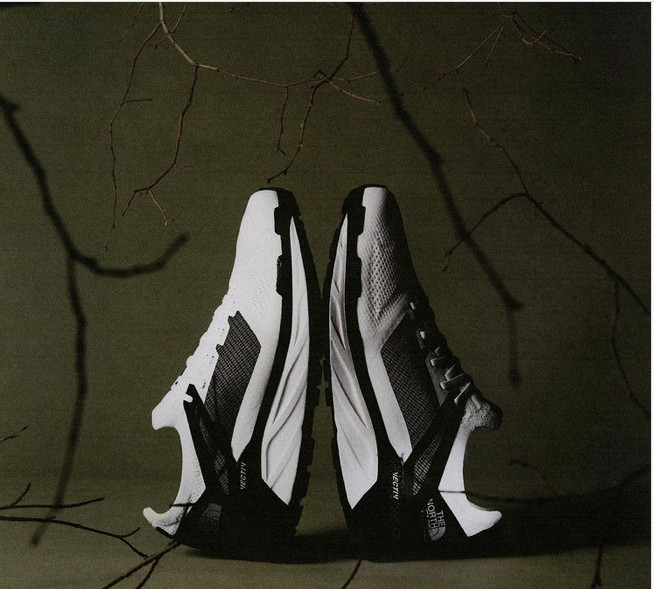
For the skeptics out there, these shoes are legit. There’s a reason the success of Nike’s shoe led to allegations of “gear doping,” new rules from the World Athletics body, and a call to arms for competitors like Adidas, ASICS and Saucony. The shoes generally combine tall, lightweight foam (which running journalist Amby Burfoot once compared to having extra leg muscles), with a carbon insert, meant to facilitate maximum energy retention — to “propel you froward” as the brand copywriters like to say.
After all that initial noise, they’re not only here to stay; they’re poised to take over other sub-sections of the sport. Yesterday, The North Face dropped a first look at its VECTIV series, the world of trail running’s first official carbon-plated running shoes.
I have zero complaints about my carbon-plated shoes. (Lately, I’ve been running in the Nike ZoomX Vaporfly NEXT%s and the Saucony Endorphin Pros.) In a year without races, they’ve helped me to log some benchmark times I’m proud of. That said, those shoes are noticeably reliant on dry, clean surfaces. They like asphalt, they prefer track. Whenever either is slick from rain or snow, or — god forbid — roots or leaves get involved, they have a ton of trouble gripping the ground.
The North Face, a brand as synonymous with all-elements gear as any on the planet, has designed a carbon-plated shoe that can actually handle unforgiving trails. Most running brands have their athletes come in and test out prototypes on a treadmill; TNF trail runners logged up to 600 miles in a single pair, and much of them on punishing terrain. One runner ran 93 miles around Mt. Rainier in them this past summer.
The premier release in TNF’s line, the FLIGHT VECTIV, aims for stability and strength, like any other reliable trail running shoe. It has a high-grip outsole, while its mesh fibers are literally reinforced with Kevlar. But it’s built for speed. The shoes contain a 3D plate directly underneath the foot, alongside a rocker midsole. Ultrarunner Pau Capell described the shoes as a “downhill weapon.” Trail runners often have to slow down due to practical concerns, not for lack of spirit. These shoes are designed to let them fly.
And, crucially, to avoid injury while doing so. The maximalist foam included in carbon-plated shoes blunts the impact of runners logging so many miles. Ultrarunners are on another level entirely; they’re incessantly susceptible to stress fractures, plantar fasciitis, sprained ankles, cramps, and broken toes. But the VECTIV line — which also includes the INFINITE and the ENDURIS, two shoes less concerned with speed — promises 10% less “impact shock.” It could bring more newcomers to the sport, and keep around those who already love it.
Login to leave a comment
How Mike Foote and Rob Krar Set the R2R2R-alt FKT (Hint: Skinny-Dipping Was Involved)
To save time, the two pros went naked while crossing the Colorado River twice during the 42-mile run.
It all started with a text on December 15. Mike Foote had a hankering for an adventure after a year without races that left him mostly situated around his home in Missoula, Montana. Wanting to end the year on a high note, he sent a Hail Mary ask to his buddy Rob Krar.
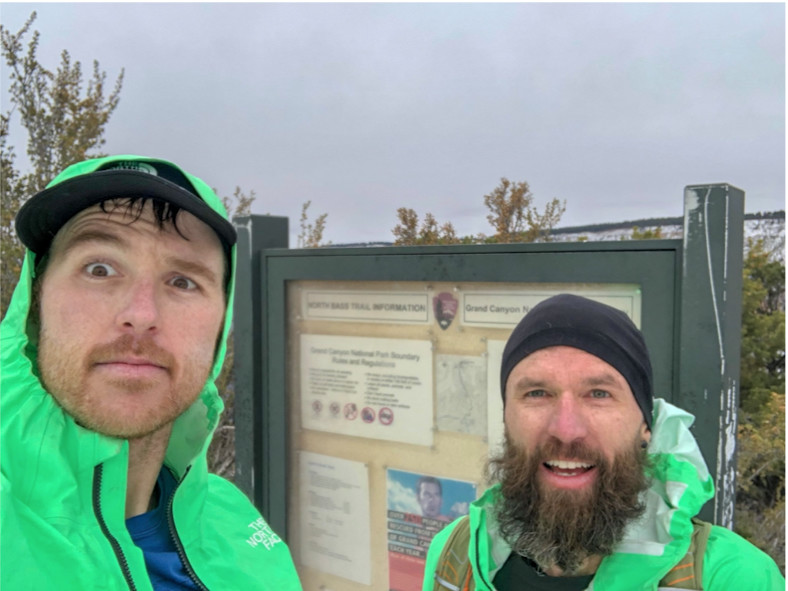
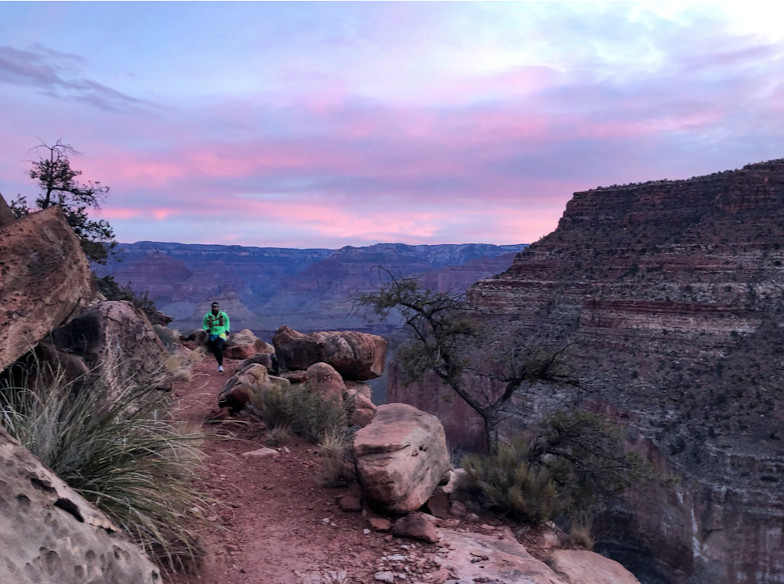
“Are you healthy right now?” the text read. “Any interest in doing the Grand Canyon alternate R2R2R with me sometime in the next couple of weeks?”
Krar, based in Flagstaff, Arizona, responded quickly: “Oh gawd.”
A back and forth commenced. Krar was hesitant and decided to sleep on it. The next day, Krar politely declined the invitation, seemingly ending Foote’s dreams to complete the run. However, a seed was clearly planted.
Krar kept thinking about Foote’s offer, so much that he and his wife, Christina Bauer, decided to scout the south rim of the trail, which is about two hours from their home. No stranger to the Grand Canyon, Krar has run many routes throughout the park, but he had never done this one. They discovered a beautiful trail that led to the Colorado River, and they even set out to check out the north section after, but were forced to turn back 30 miles away from the trailhead due to snow.
Turns out, that was good enough. On December 27, Krar let Foote know he was all in. Four days later, they were camping out at the trailhead.
“I really was somewhat unprepared for what we did, but I was in the realm of possibility,” Krar told Runner’s World. “I like to say, I enjoy big, dumb ideas. Mike’s idea was a big, dumb idea, and it would be an immensely satisfying way to finish what really is a rough year.”
“Sometimes you plan for big objectives with months of preparation,” Foote told Runner’s World. “Sometimes you wing it.”
After a night sleeping in single-digit temperatures, they awoke slowly to prepare for the R2R2R-alt, the 42-mile out-and-back route with two crossings of the Colorado River. It took a bit of time to get rolling because the oatmeal, water, and coffee they brought was a frozen block.
Just before daylight, around 7 a.m. on December 31, they set out in their soon-to-be-released North Face Vectiv trail shoes, running the 18 miles from the south rim to the first river crossing.
Typically when runners cross the Colorado River, they utilize wetsuits and pack rafts. Foote favored that method, but Krar had other ideas.
“I have a tendency to get cold easy, so it was a well-thought-out, calculated decision that, in my mind, offered us to best way to stay warm,” Krar said. “It seemed counterintuitive, but we would spend more time getting in and out of wet suits, especially when it was wet, and the suits would give us minimal warmth for a two-minute swim. Why not just take the shock of the initial plunge and get to the other side with our clothes in dry bags.”
And that’s exactly what the duo did. When they arrived at the river’s edge, they stripped down quickly, and packed up their dry bags. Foote had brought along a pack raft, but instead, they fought that fear we all have of jumping into cold water, and leapt into the river buck naked.
“Once you’re in, you’re in,” Foote said. “You’re 100-percent focused on getting across.”
After about five seconds of shock, they made their way across in roughly two minutes, quickly getting on shore and throwing on the puffy jackets they had in their dry bags. The whole experience swimming from one side to the other took about five minutes.
Starting up the trail to the north rim of the canyon was tougher than the south side. It involved a much more technical trail, particularly on the climb out of the canyon, which required a slower approach.
“We didn’t have deep, philosophical discussions about life,” Krar said. “I’d like to call it comfortable silence and knowing we were doing something incredible.”
Foote agreed, and added that his mind was mostly focused on one thing the entire way.
“The wasn’t a few minutes where I wasn’t thinking about that river crossing,” he said.
After nearly 30 miles and 10 hours, they made it up to the north rim and back to the river. Again they quickly undressed and jumped in—but this time, they got caught by the current and ended up in an eddy. This slowed them down, costing them about a minute before getting to the other side in roughly three minutes.
It took a toll, mentally and physically. Krar said his feet were numb for 20 to 30 minutes, and he struggled to find his running legs again. They also were met with some fresh snow after a flurry while they were running the northern section left two to three inches on the south side trail.
With the river crossings behind him, Foote’s mind shifted to the finish, counting down the minutes as they made their way up the south rim.
“What do we have? 30 minutes? 10 minutes now?” Foote thought as he made the climb up. “The terrain was constantly switching from big steps, then runnable, and we settled into a hiking pace with our headlamps on just trying to get to the end.”
Finally, after 11 hours, 32 minutes, and 9 seconds, they reached the trailhead, officially setting the fastest known time (FKT). Their mark bested the popular 2018 FKT set by the trio of Jim Walmsley, Tim Freriks, and Eric Senseman.
They had thought about camping another night, but after the cold day, Bauer drove them both back to Flagstaff. They warmed up during the two hour drive, arriving home around 11:15 p.m. Bauer threw some pot stickers in the oven and before they knew it, it was 11:55 p.m.
To mark the new year and the successful FKT run, Krar broke out a special Trappist beer, made by monks in the Netherlands and Belgium. It was a birthday present for him from his wife the day before.
He poured three ounces for everyone, said cheers to the end of 2020, and went to bed.
“We went big,” Foote said.
by Runner’s World
Login to leave a comment
Adidas' ownership of the Reebok brand may be coming to an end, according to a report from Manager Magazine today
According to the German publication, the Three Stripes has already assembled an internal team to potentially reach a deal to sell the company by March 2021.
Two names have emerged as potential suitors of acquiring the brand: China's Anta Sports and the VF Corporation, the latter of which owns outdoor apparel and footwear brands including Timberland, Vans, and The North Face.
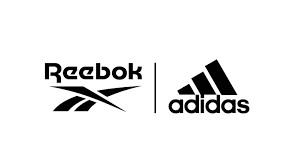
Since taking over as CEO of Adidas in 2016, Kasper Rorsted has repeatedly stated that the brand has no intention of selling Reebok off, despite demands from investors to do so in 2017.
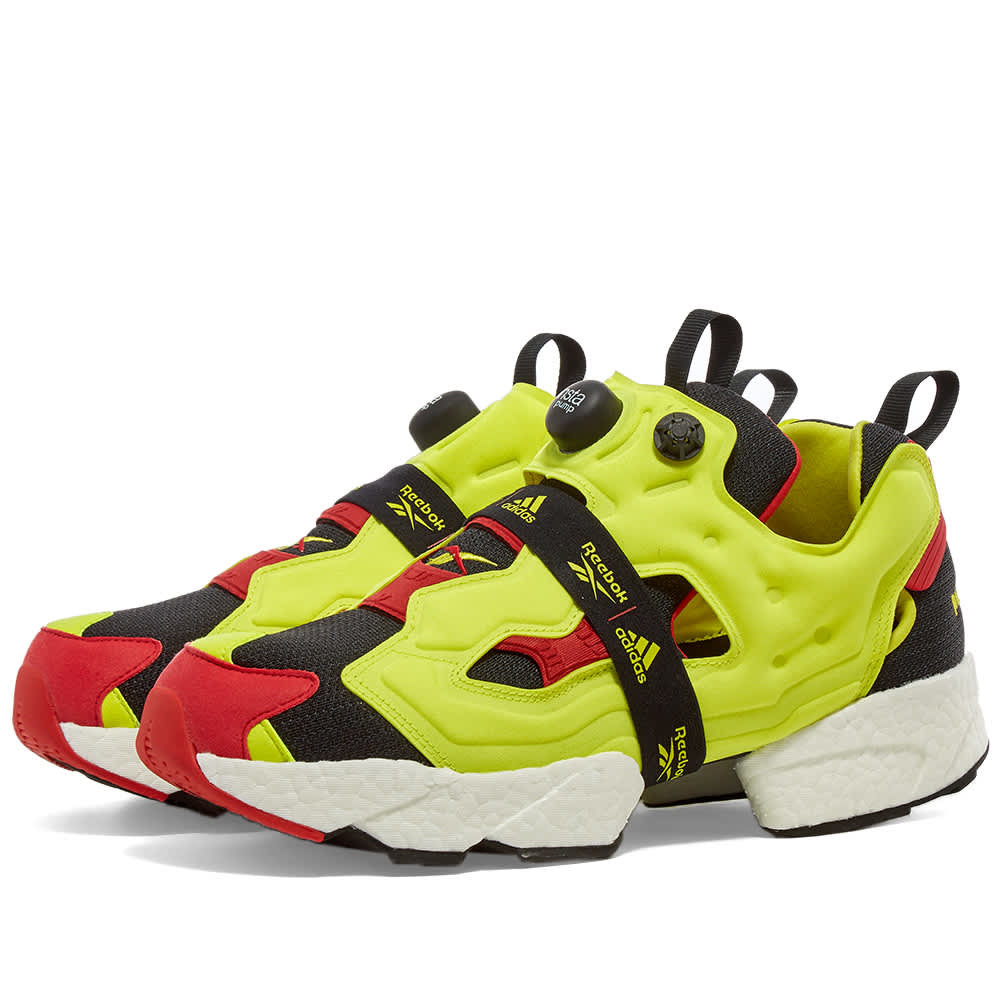
In Adidas' Q2 2020 earnings report, the company reported that Reebok revenues were down 42 percent due to its large presence to the U.S. market in the midst of the coronavirus pandemic. Adidas bought Reebok in August 2005 for $3.8 billion.
When reached for inquiry, Adidas cited its company policy to not comment on market rumors.
by Victor Deng
Login to leave a comment
Kilian Jornet is always up to something and this ultra feat might top his list
Kilian Jornet is always up to something: Breaking the records for the fastest ascent and descent on Mount Everest, winning some of the biggest ultramarathons in the world—including the 2017 Hardrock Endurance Run in a sling—and living his best life with his wife Emelie Forsberg in the mountains of Norway.
This time around, Jornet challenged his ski partner and world-class BASE jumper Tom Erik Heimen, 44, of Norway, to a race up and down one of the most-iconic climbing mountains in the world: Romsdalshorn. Sitting at more than 5,000 feet, both would have to climb up between 1,300 to 1,500 feet and descend to be declared the winner—Jornet doing so on foot and Heimen BASE-jumping down to the bottom.
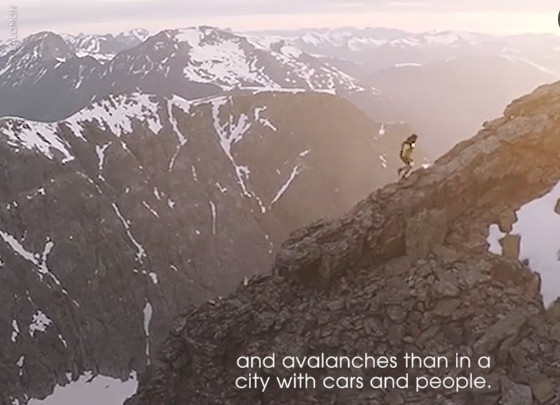
Both took separate routes. Jornet went up the north face and climbed down Halls Renne on the other side while Heimen went up Halls Renne and BASE-jumped off the north face. This way, the two would cross paths during their treks.
“It was very unpredictable who would be faster,” Jornet said about the challenge. “I knew I could climb much faster, but the downhill is down climbing so it takes as much time as going up for me. And I also knew that Tom Erik [has] a very good physical level, so he would be quick to climb and of course very fast on the way down.”
As you can see in the video, Jornet has no issue ascending, finishing in just over 30 minutes before beginning his descent. Heimen reached the top 15 minutes after crossing paths with Jornet during his descent and quickly suited up for his jump.
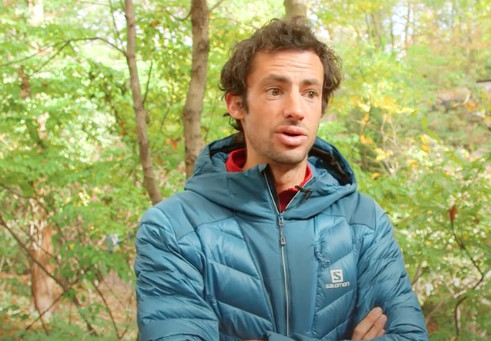
Heimen hit the ground two minutes after takeoff, but Jornet made it to the bottom in a time of 52:26. Heimen’s time was 53:55.
“What surprised me most with the challenge was how fast Kilian is descending the technical and steep Halls Renne with the challenges of loose rocks all the way,” Heimen said. “I know he is very fast going up, and had no doubts that he would beat me to the summit, but I was expecting him to spend more time climbing down than climbing up.”
Jornet’s latest antics add to a constantly growing number of wild races and feats that runners are attempting like Nick Symmonds going for the fastest mile while dribbling a basketball, Mario Mendoza’s 50K treadmill record, or Cynthia Arnold smashing the triple-person stroller marathon record.
Who knows what we’ll see next?
<iframe width="560" height="315" src="https://www.youtube.com/embed/6dgm5MQPGz8" frameborder="0" allow="accelerometer; autoplay; encrypted-media; gyroscope; picture-in-picture" allowfullscreen></iframe>
by Runner’s World
Login to leave a comment
Kara Goucher is officially now an ultrarunner
Kara Goucher took a podium spot yesterday at her first 50K at The North Face Endurance Challenge Championships
Olympic marathon runner Kara Goucher has joined the ultramarathon club. On Saturday November 16, the former Nike athlete raced to an impressive third place finish at The North Face Endurance Challenge Championships 50K race in San Francisco in a time of 5:30:57. Goucher has found a new love and appreciation for the trails, especially in the wake of the suspension and allegations of abuse against Nike and her former coach, Alberto Salazar.
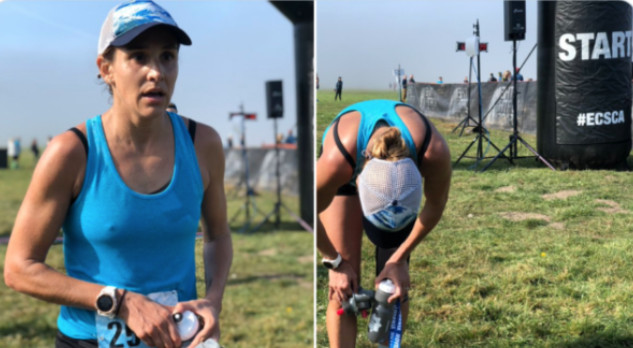
Goucher raced her first trail race back in August at the Leadville Trail Marathon, and has been moving up in distance ever since. The North Face 50K race gains 2,053 metres running through the Marin Headlands in the San Francisco Bay area. Goucher challenged her physical and mental toughness through Tennessee Valley, Muir Beach, and Pantoll Station, descending on the famous Dipsea trail. After crossing the Golden Gate Bridge, she finished the race enthralled and exhausted at Crissy Field.
Goucher shared the podium with Corinne Shalvoy in first place with a time of 5:00:10 and Jenny Comiskey in second with a time of 5:15:12. Nicholas Handel won the men’s 50K race in 3:58:11, Brian Gillis was second in 4:11:45, and Justin Grunewald was third in 4:15:39.
Login to leave a comment
Cecilia Flori often smiles through pain, but now she’s hoping an injury doesn’t keep her from competing at the 2019 Western States 100-mile race
The gap between elites and amateurs can feel wide indeed, but one area of common ground is an injury that threatens the start line of an important race. That’s the relatable place elite ultrarunner Cecilia Flori finds herself as she struggles with a foot injury a few weeks out from the Western States Endurance Run, the 100-mile race on June 29, from Squaw Valley to Auburn, California.
Expected to be a favorite in this year’s event, Flori arrived in California more than a month before the race, hoping to train on the course. The 38-year-old Italian physicist, who currently calls New Zealand home, earned bib F5 and says she was feeling as fit as ever when her foot began to hurt.
“I’ve been working on my speed by running marathons this year,” she said. “I think the Western course suits my strengths and I was more than ready for it.”
Relatively new to the ultra scene—and running in general—Flori made a big entrance to the sport, nabbing a podium spot at the North Face Endurance 50-miler in Canada in 2015.
“I’ve always loved the outdoors and was a climber before a triathlete friend convinced me to run a half marathon with him,” she said. “I really enjoyed it and I was hooked.”
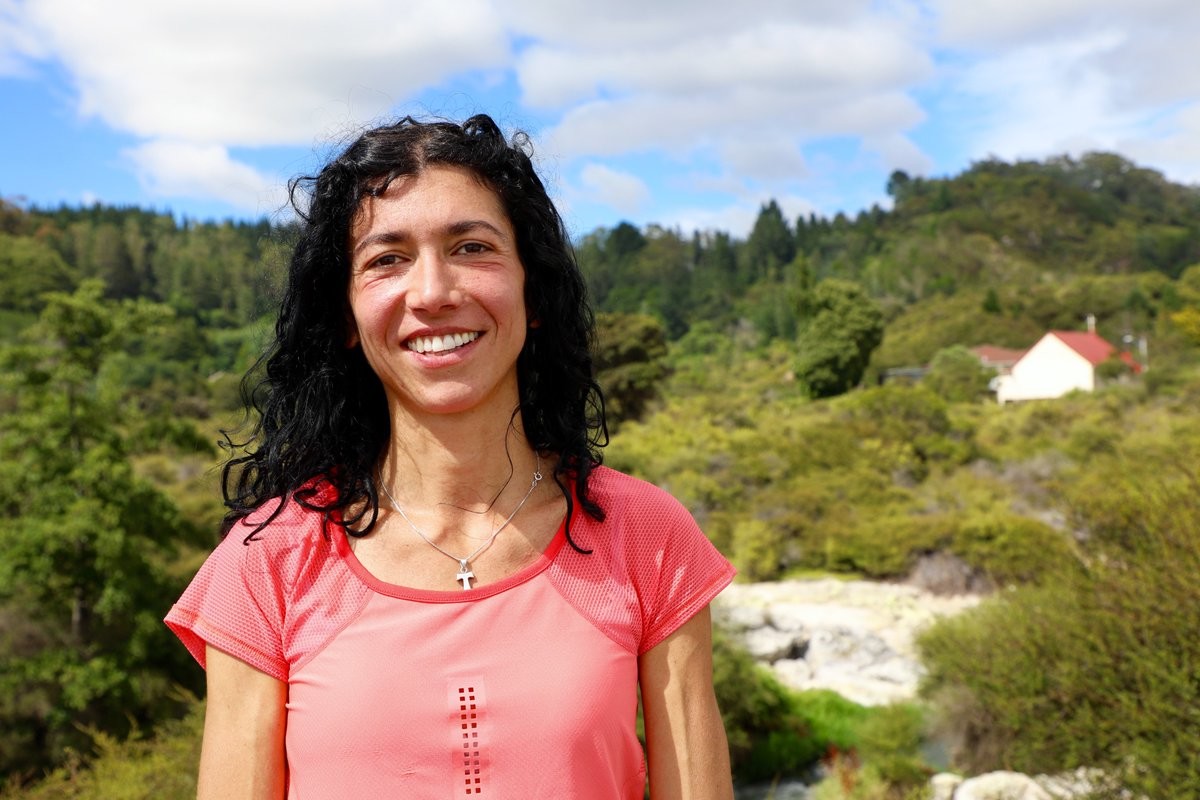
Flori says the flow of running is what drew her in. “The repetitive motion makes me feel alive,” she said. “It’s a primal feeling—I’m at one with nature when I’m on trails.”
Relocating for her research to scenic New Zealand in 2016, Flori migrated entirely from climbing to running, joining a running club for training. She took on some shorter distance trail races and then won the Taupo 100K. “I started thinking that maybe I was good at endurance,” she says. “In 2017, I entered the Tarawera 100 and took third behind [2008 U.S. Olympic marathoner] Magda Boulet and [2017 Comrades champion] Camille Herron. I was shocked but I realized I could compete on an international level.”
Herron has since become Flori’s coach, and it was that Tarawera race that made Herron take note.
“I watched her run neck-and-neck with Magda Boulet,” Herron said. “What I remember most as I looped around and saw her was the big smile on her face.”
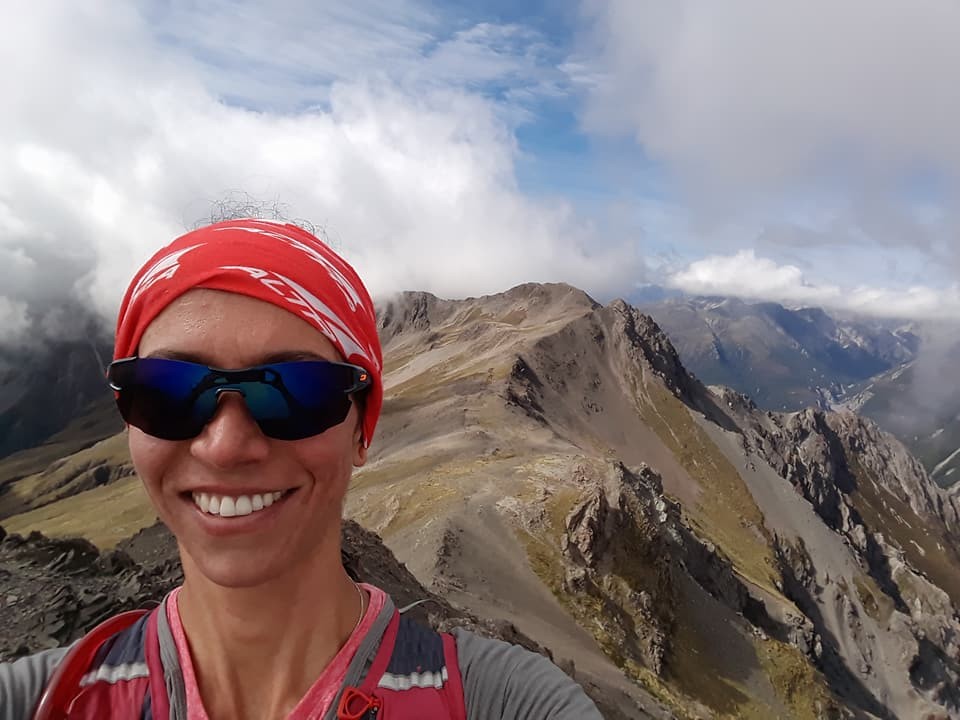
Since then there have been few hiccups in Flori’s ascent to the upper echelons of ultras. She pulled off fifth at last year’s Western States in 19:44 and followed it up with a 10th place finish at the 101K CCC in the French Alps last September, which she admits, tested her. “It was a learning experience,” she said. “I was sick and had to stop at aid stations quite a bit. But I still managed 10th and I’m proud of myself.”
Herron says Flori has a bright future ahead of her. “I saw that same smile on Cecilia’s face at 62 miles into Western last year. For someone to look that good in fifth place tells me she has lots more to give.
by Amanda Loudin
Login to leave a comment
Western States 100
The Western States ® 100-Mile Endurance Run is the world’s oldest and most prestigious 100-mile trail race. Starting in Squaw Valley, California near the site of the 1960 Winter Olympics and ending 100.2 miles later in Auburn, California, Western States, in the decades since its inception in 1974, has come to represent one of the ultimate endurance tests in the...
more...Kami Semick won every Ultra race she entered in 2009 and now is making a comeback
A decade ago, at 42, Kami Semick reached the pinnacle of ultrarunning. She won every race she entered in 2009, including two world championship events in the 100k and 50k, and earned UltraRunning’s Ultrarunner of the Year title for the second year in a row.
But five years later, she called it quits and disappeared from the sport.
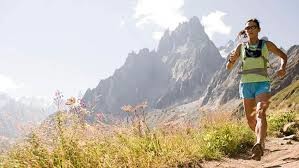
Her breaking point came at The North Face Endurance Championship 50-miler in San Francisco, a race she’d won in 2008. At that event in December 2014 where she finished 17th female, “It felt like I was dragging a load of bricks around,” says Semick, now 52 and living in Bend, Oregon. “The only reason I finished is because I promised myself this was the last time I was going to run 50 miles. I wasn’t coming back because I felt so horrible. I shook hands with my sponsor The North Face and said, ‘Nice knowing you, but I gotta stop.’”
Fast forward another five years to now, and suddenly, Semick’s name is popping up again. Eschewing attention-seeking social media posts, she quietly and cautiously began running longer distances again in 2017. She finished two 50-milers and a 100k in her home state last year, then won a 40-miler and 50k in California. Now she’s getting ready to line up at the hyper-competitive Lake Sonoma 50 in April, and the Lavaredo Ultra 120K in Italy in June.
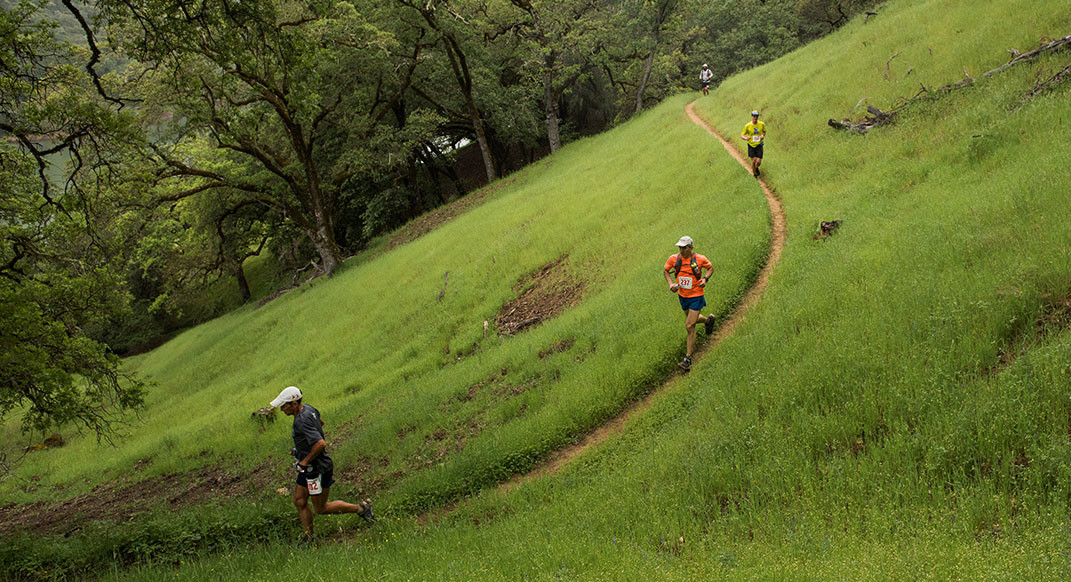
While those newer to the sport might not even recognize Semick, those of us who began ultrarunning in the mid-2000s probably share my excitement at seeing her return. Personally, I’ll never forget The North Face ad campaign from 2006 that showed Semick trail running with her then-4-year-old daughter strapped onto her back. Semick’s muscly physique, fast times at races, and gutsy combination of running and parenting gave female ultrarunners a powerful role model.
I reached out to Semick to find out what happened, and what it’s like to return to the scene and get ready to race again after a long break after turning 50. She agreed to talk, but with some reluctance as part of her looked forward to showing up to Lake Sonoma without being recognized.
“If nobody knows I’m there at a starting line, I’m so happy about that, because then there’s no expectations,” she says. “I’m trying not to be attached to my history as a runner, and I don’t love the spotlight, but the reason I wanted to talk is because I’m curious about other women’s experiences. If I can share my story, then maybe we can join together as women in our 50s and say, ‘Yes, it’s hard.’ … I feel like we have to band together for support.”
by Sarah Lavender Smith (Ultra Running Magazine)
Login to leave a comment
Lake Sonoma 50
The race is held on the rugged trails at Lake Sonoma, about 10 miles northwest of Healdsburg. The course is 86% single track and 9% dirt roads, with the first 2.4 miles on a paved country road.The race starts at 6:30 a.m. and has a 14-hour time limit. ...
more...A new running podcast is going to start up January 10 from Strava
Strava is starting another running podcast beginning January 10. The fitness tracking app is about to unveil a new podcast entitled “Athletes Unfiltered,” for the runners and cyclists who use it.
It will be hosted by The North Face-sponsored ultrarunner Hillary Allen and feature interviews with extraordinary athletes and athletes in extraordinary circumstances.
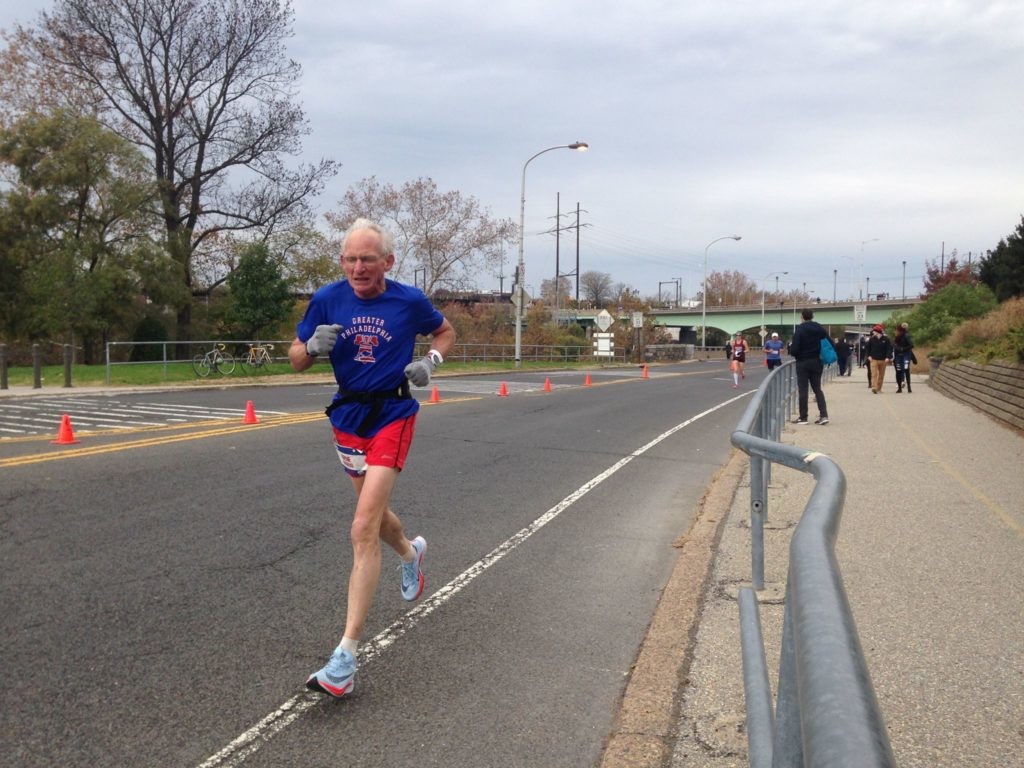
One of the first episodes will feature an interview with Gene Dykes (photo), who recently broke the late Canadian marathoner Ed Whitlock‘s WMA M70 marathon record with his 2:54:23 performance in Jacksonville, Florida.
Strava posted this on their website, “Athletes Unfiltered features normal athletes. They're good, inspiring people, daring enough to share their journey day after day, whether that's breaking a marathon PR or cutting a run short to desperately search for the nearest toilet.”
Login to leave a comment
Vlad Ixel traded his alcohol and cigarette addiction for an addiction to trail running
Vlad Ixel decided trail running was a healthier addiction than cigarettes and alcohol.
Ixel, who came second in the North Face 50 behind Chinese phenomenon Yan Longfei on Saturday, decided to quit alcohol, cigarettes and meat two days before his 25th birthday. Later that week, he decided to run his first-ever marathon.
“When I was 24, the only running I would ever do was to the liquor store before it closed to make sure I had enough bottles,” said the 31-year-old Ukrainian, who has been based in Hong Kong for the past four years. “I couldn’t sleep without my six beers.”
”The high I got from crossing the finish line was far greater than anything I felt on a night out with drugs or alcohol, and with my addictive personality it just began to snowball. Since then, I’ve literally never stopped running,” Ixel said.
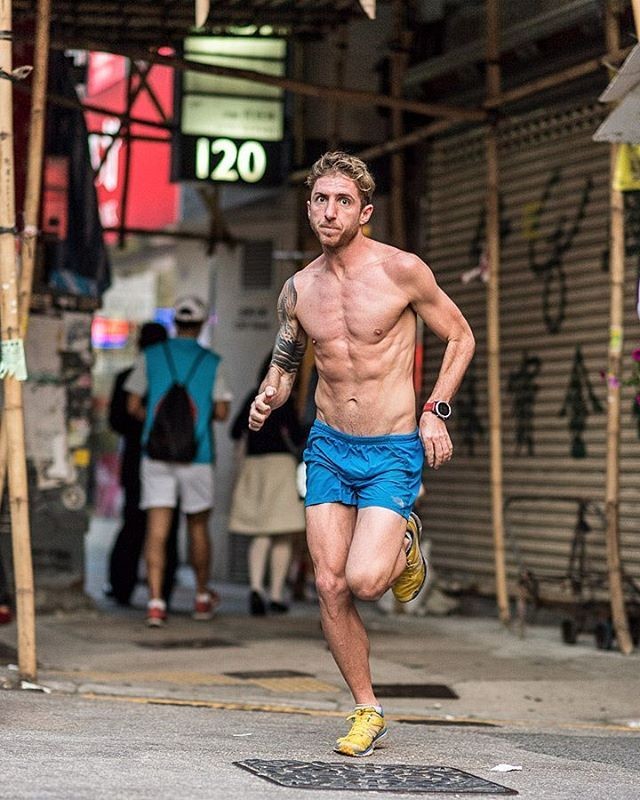
He’s not exaggerating. Ixel quickly became one of Hong Kong’s most active elite runners. He is sponsored by North Face and runs roughly 30-35 ultra-marathons a year.
In addition, Ixel has quickly developed a strong presence as an online running coach and motivator, having accrued over 20,000 Instagram followers.
Ixel moved to Hong Kong from Perth, Australia for his running career.
“When I was living in Perth there was maybe only two or three races a year. So when I started racing in Asia I met some friends who told me I should come down to Hong Kong for race season. I ran the 2013 Northface 100 and I thought ‘Wow this place is awesome, this is where I need to be.’
Login to leave a comment
Chinese runner Yan Longfei is having great success from the marathon and beyond
China’s Yan Longfei broke yet another Hong Kong course record at the North Face 50 with a time of four hours, 45 minutes and five seconds, shattering the previous record by more than 40 minutes at Tai Mei Tuk.
It was the third Hong Kong trail running record broken in less than two months for Yan, who smashed the Lantau 70 record back in late October and did the same in the TransNT back in November. And once again, he did so “without running seriously.”
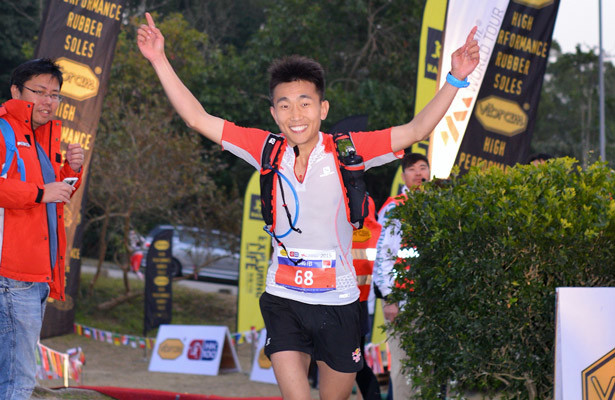
“Yan Longfei is ridiculous, he’s just a phenomenal athlete,” said the North Face-sponsored Vlad Ixel, who finished second with an impressive time of 5:26:55. “I knew that I was racing for second place from the beginning.”
It was the first time running the North Face 50 trail for Yan, who said he enjoyed taking in the scenery and saying hello to hikers.
“I just treat these races as practice,” explained Yan, who elected to run the 50 instead of the 100 because he is running the Shenzhen International Marathon on Sunday. “Hong Kong’s trails are the most beautiful I’ve ever seen. I had done the Lantau and Hong Kong trails before but it was my first time doing this course. I really enjoyed it.”
Login to leave a comment
Due to air quality concerns resulting from the Camp wildfire, the 2018 North Face Endurance Challenge has been cancelled
Login to leave a comment
Ultra runner Diane Van Deren says running is her outlet, her medicine and she doesn't say I can't anymore
Inspirational Stories
Login to leave a comment
VF corporation bought the running shoe brand Altra
Login to leave a comment
Records smashed at The North Face 100 Thailand 2018
Login to leave a comment
Maybe the Most Difficult Race on the Planet?
Login to leave a comment


